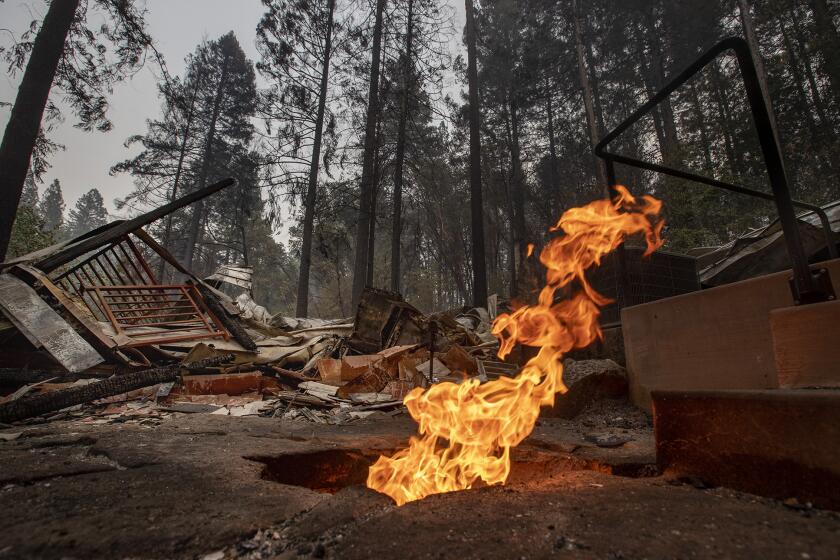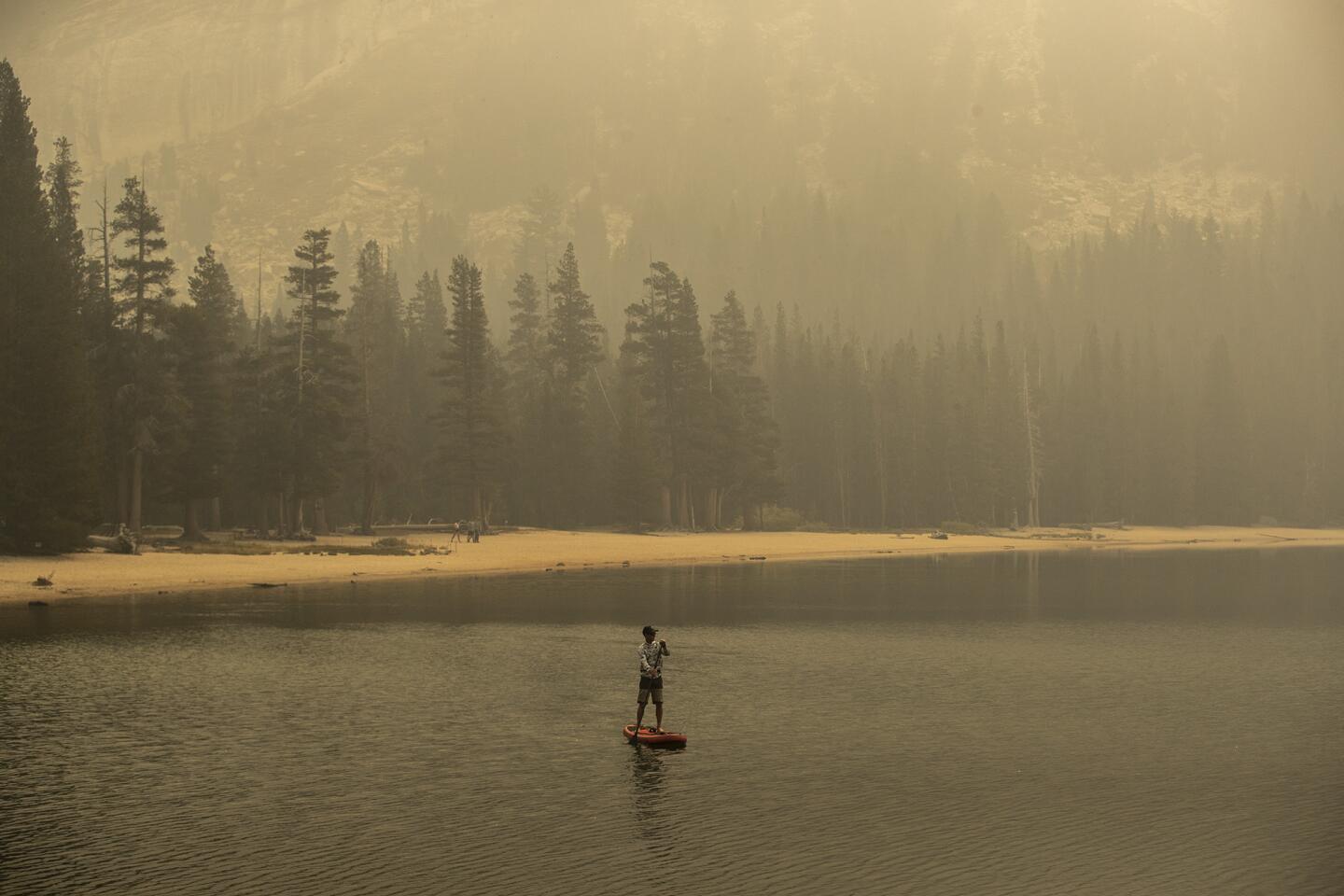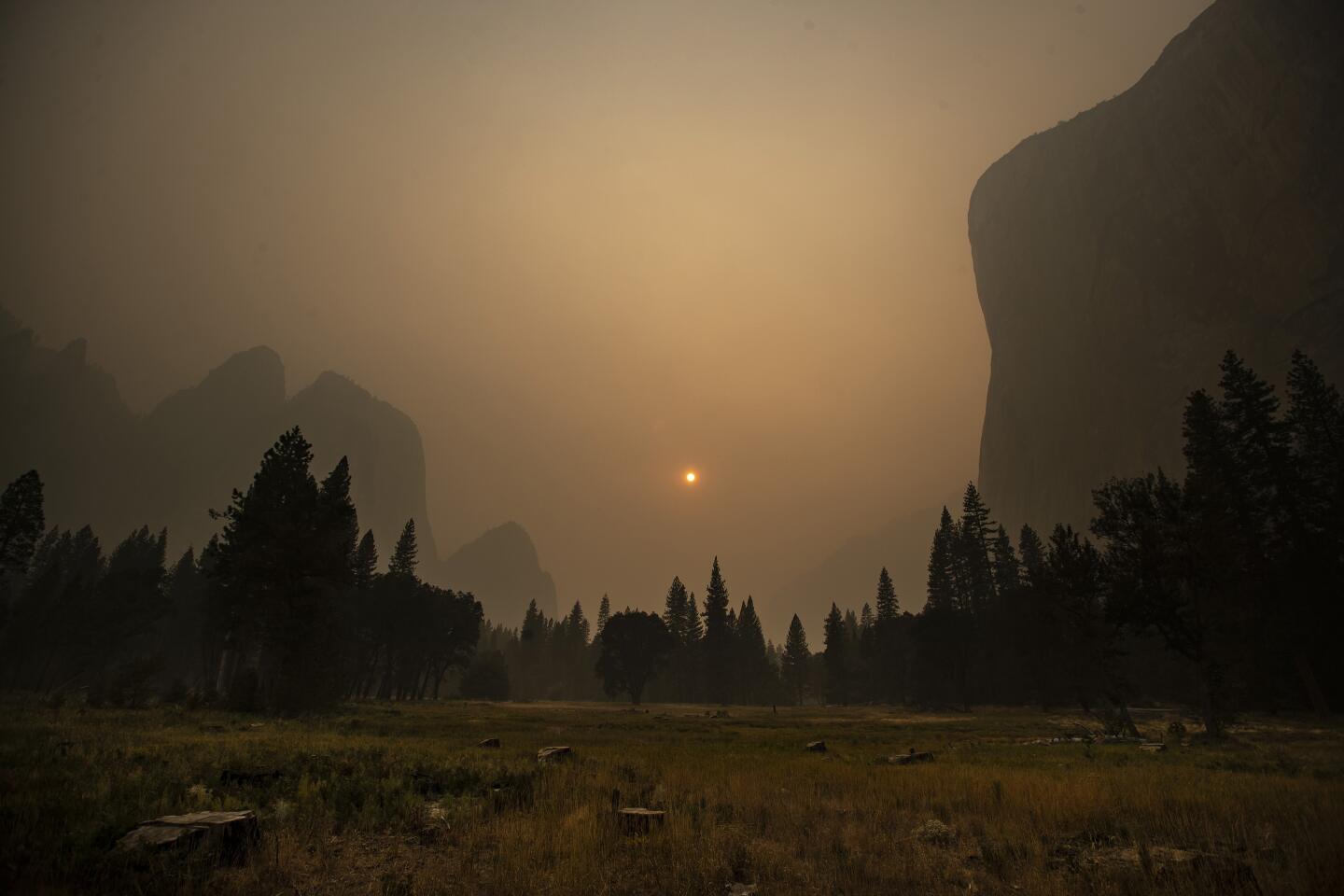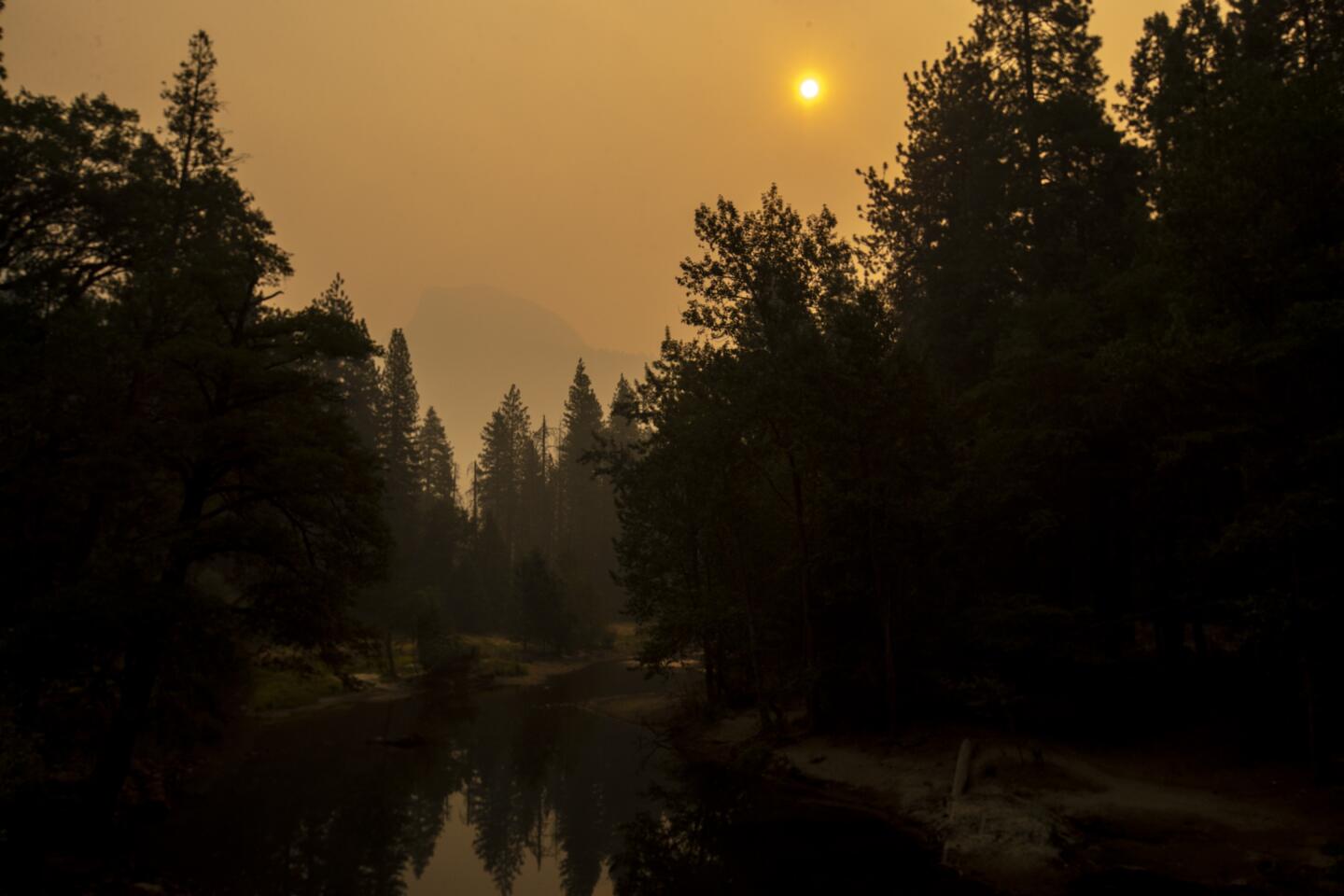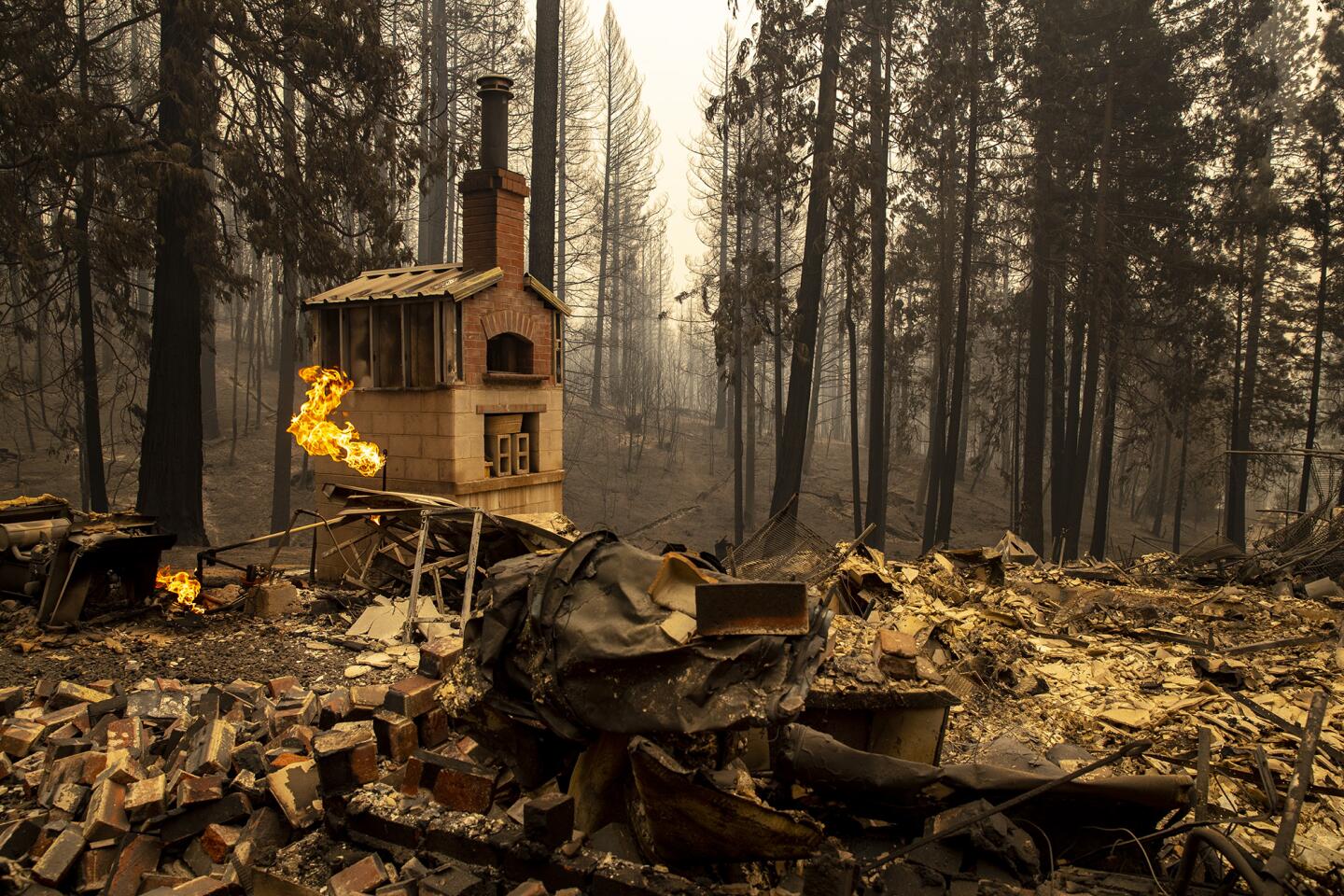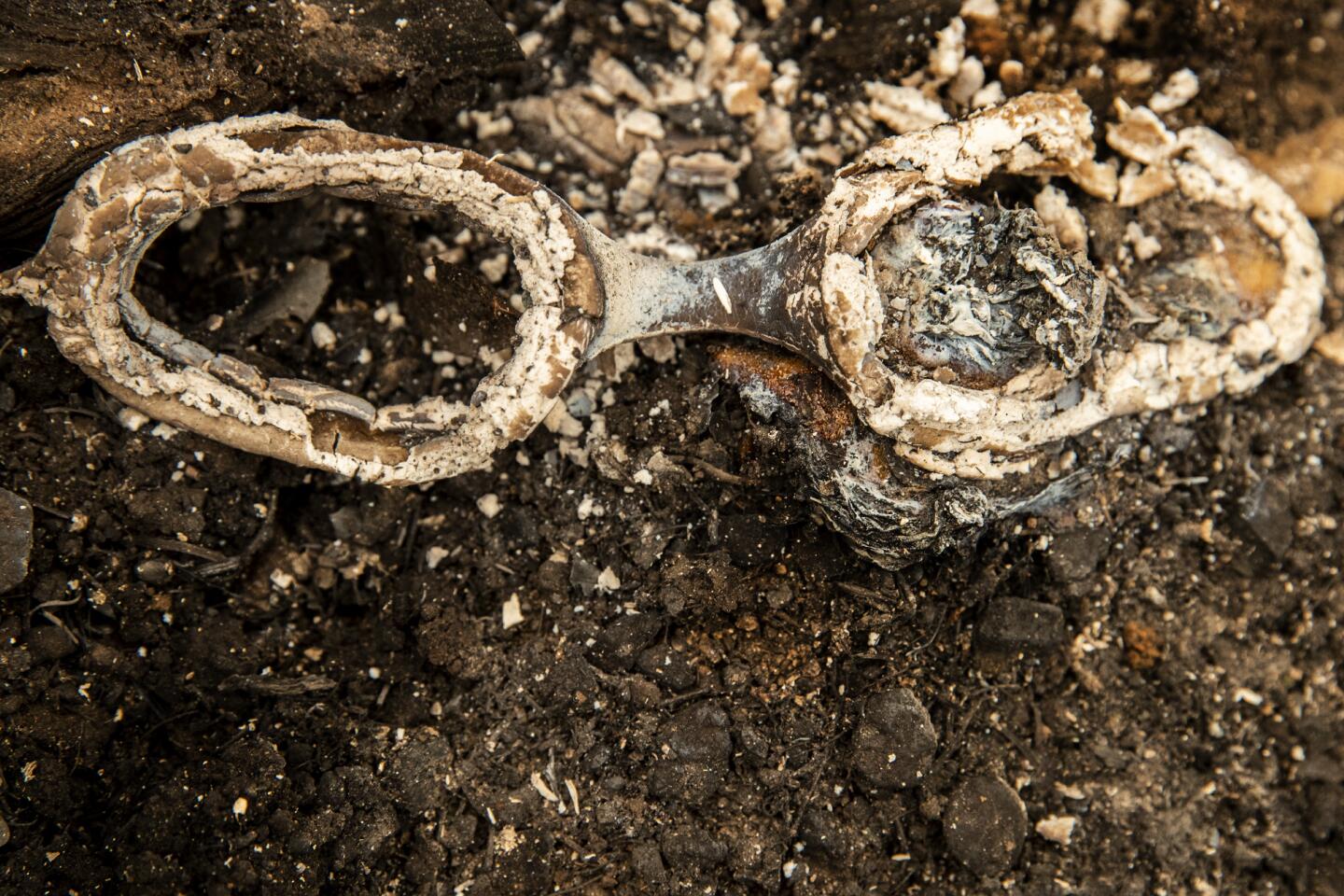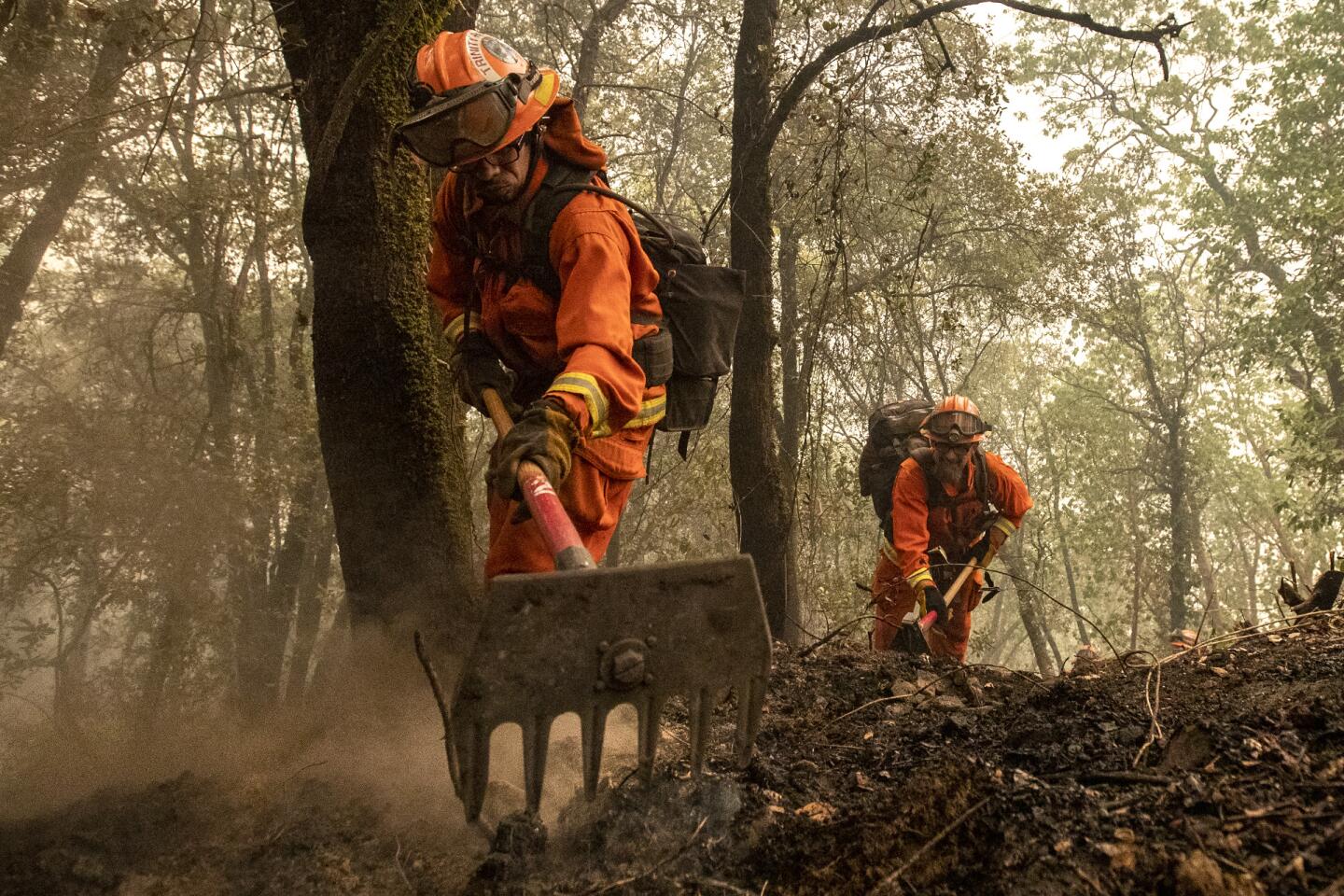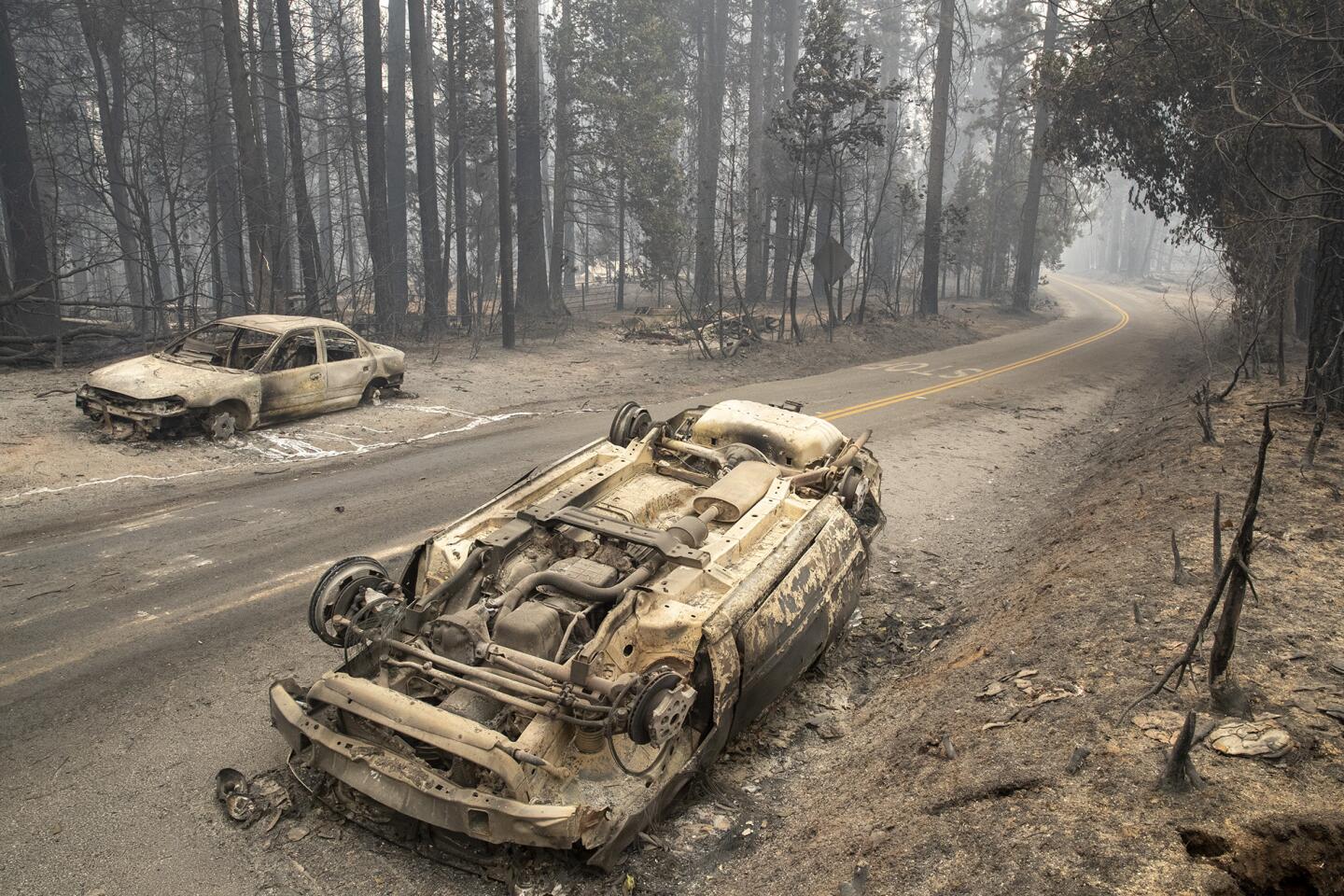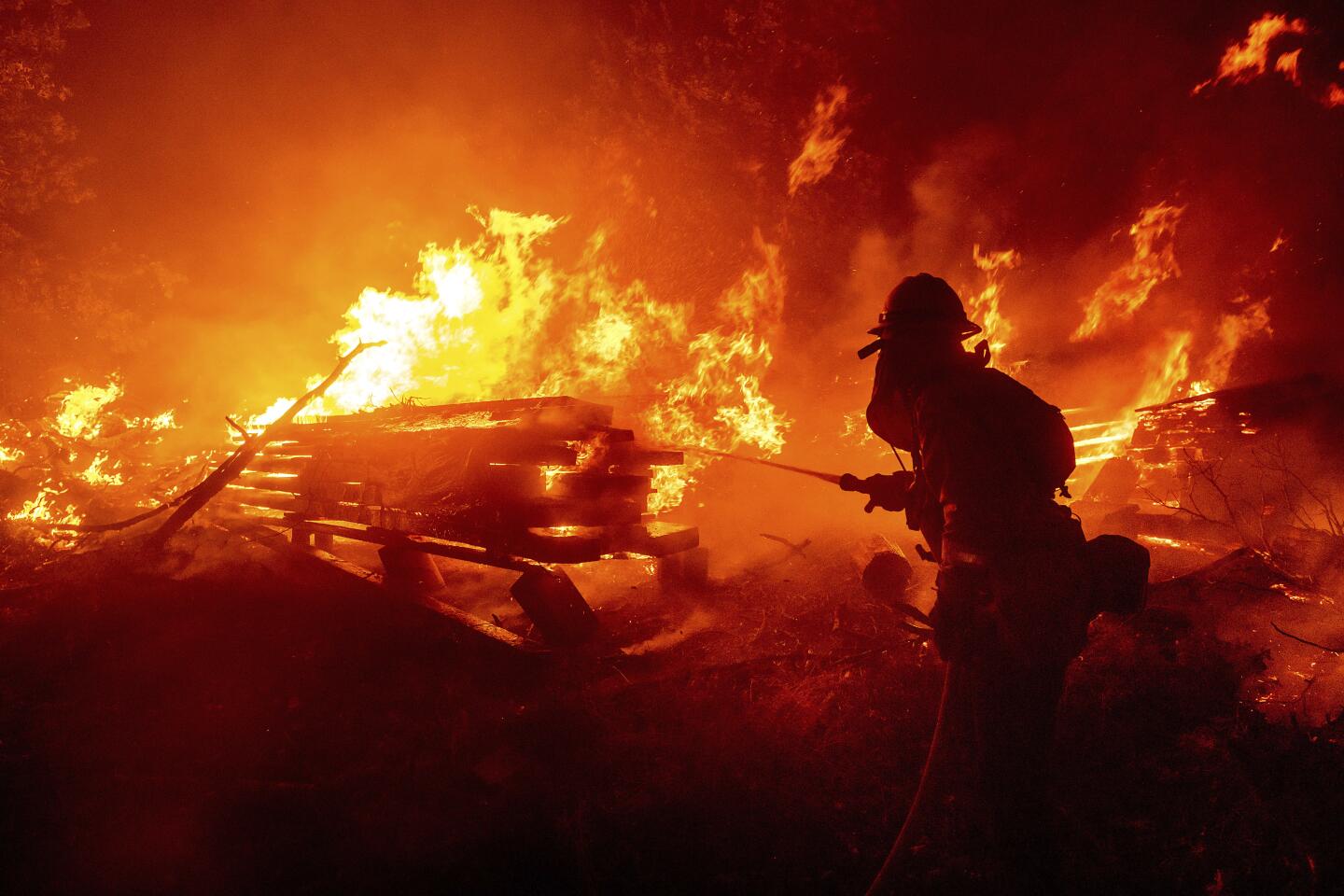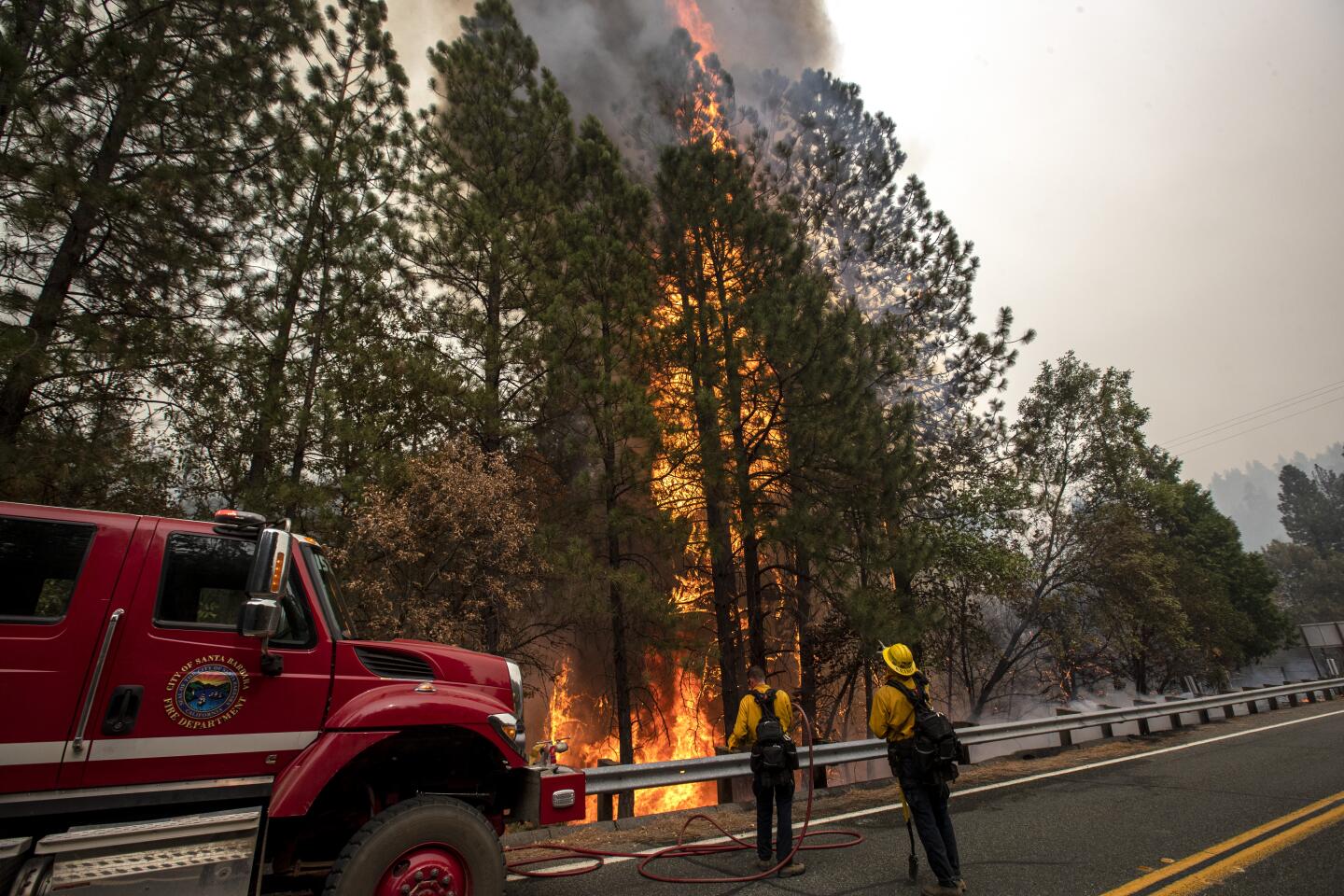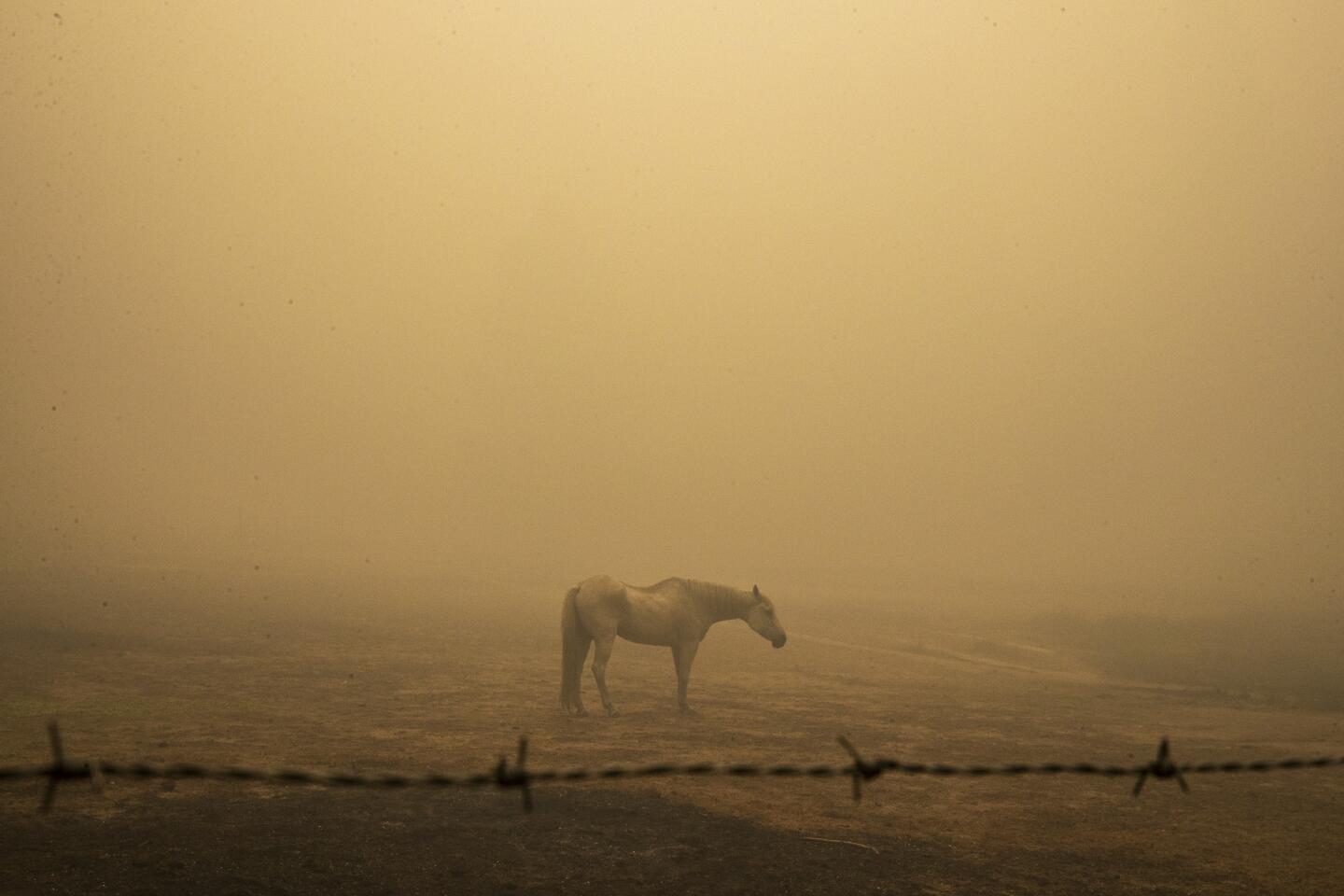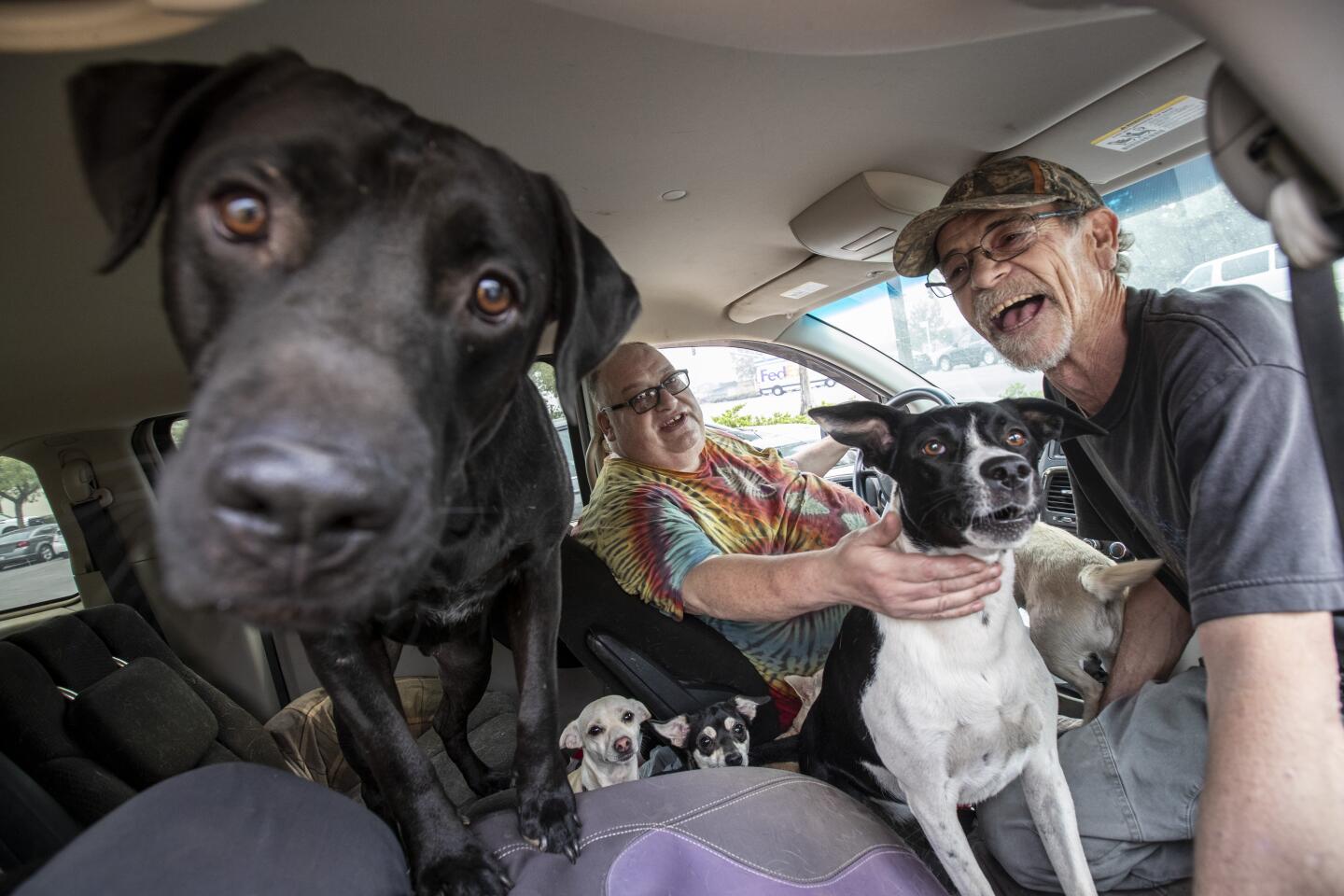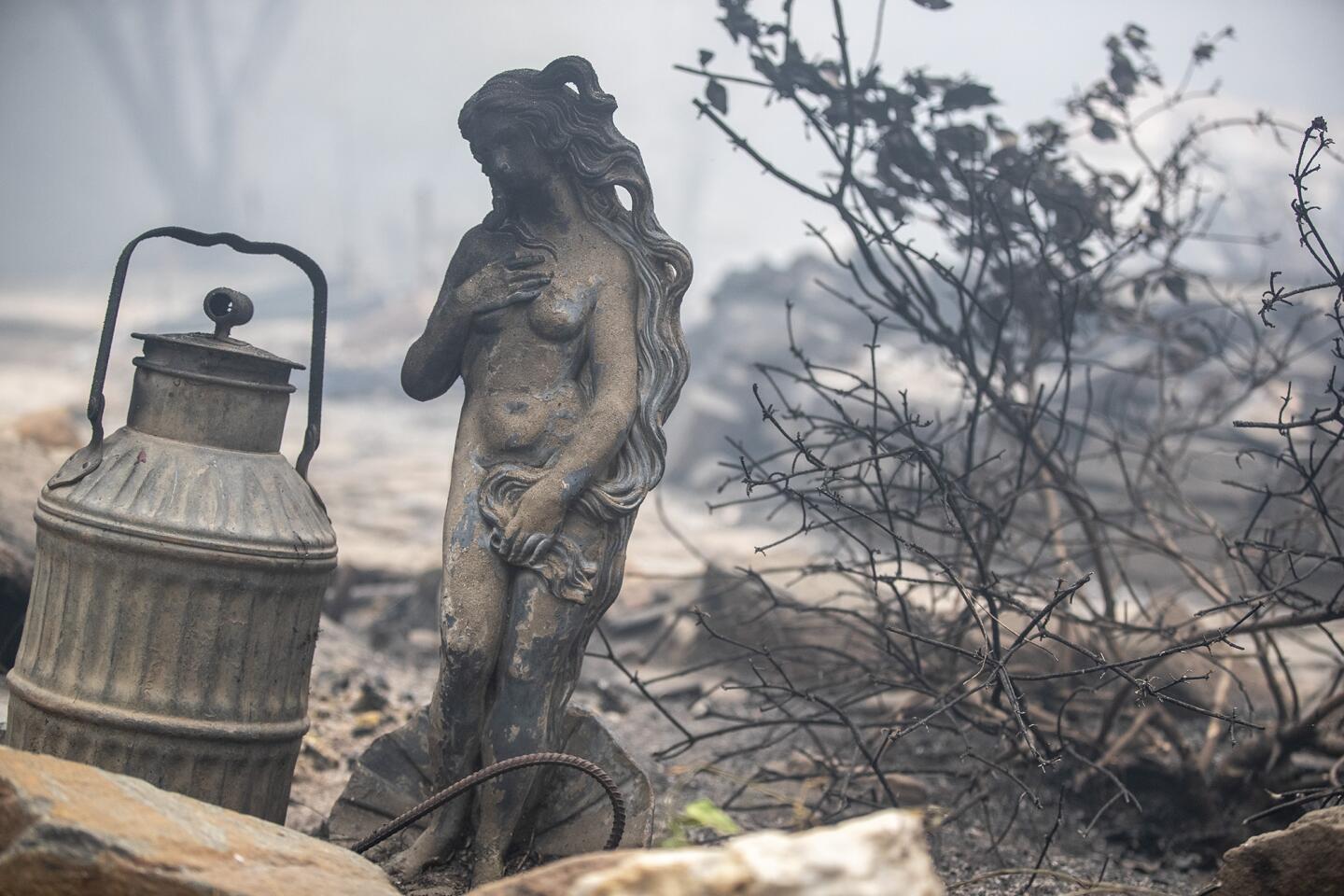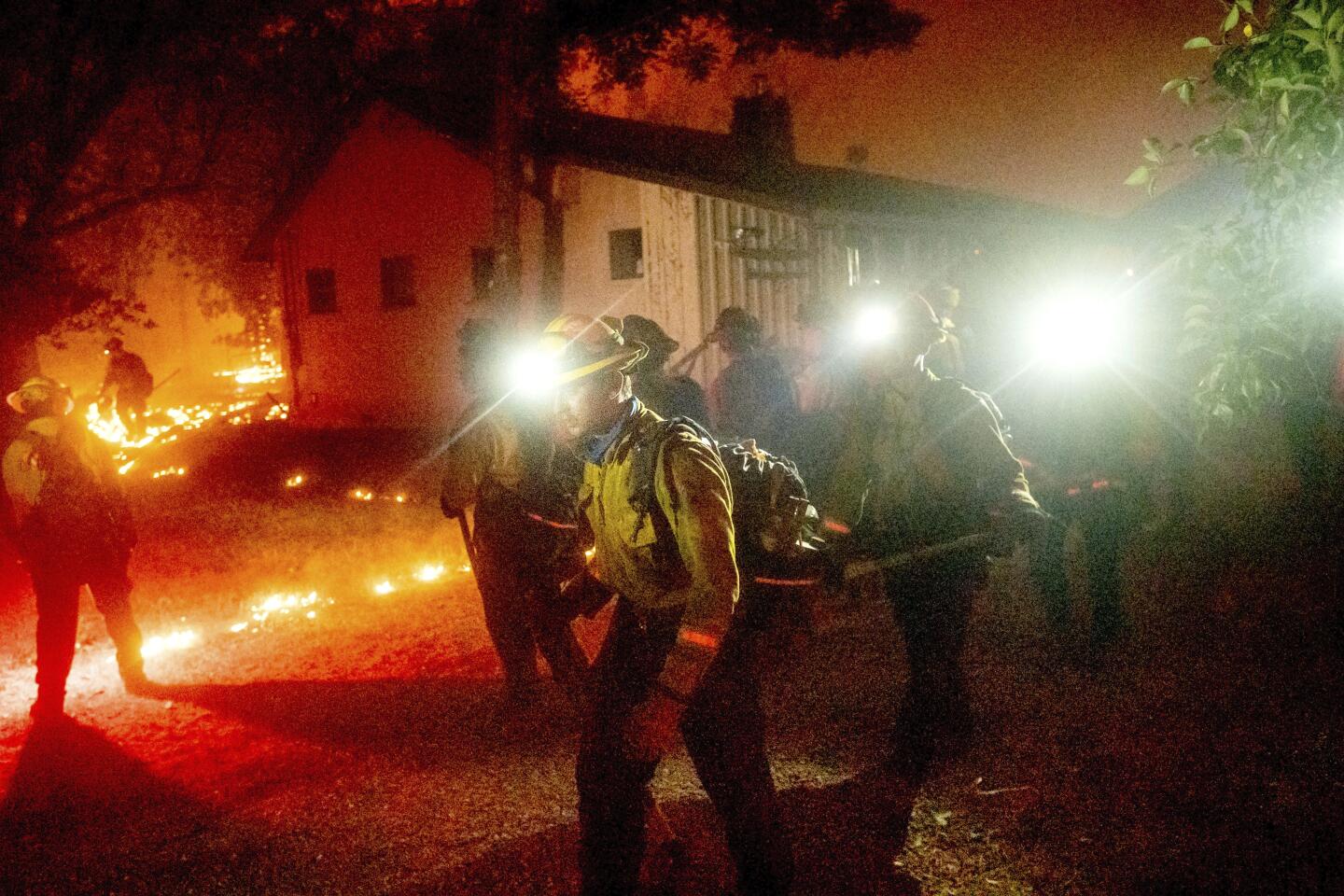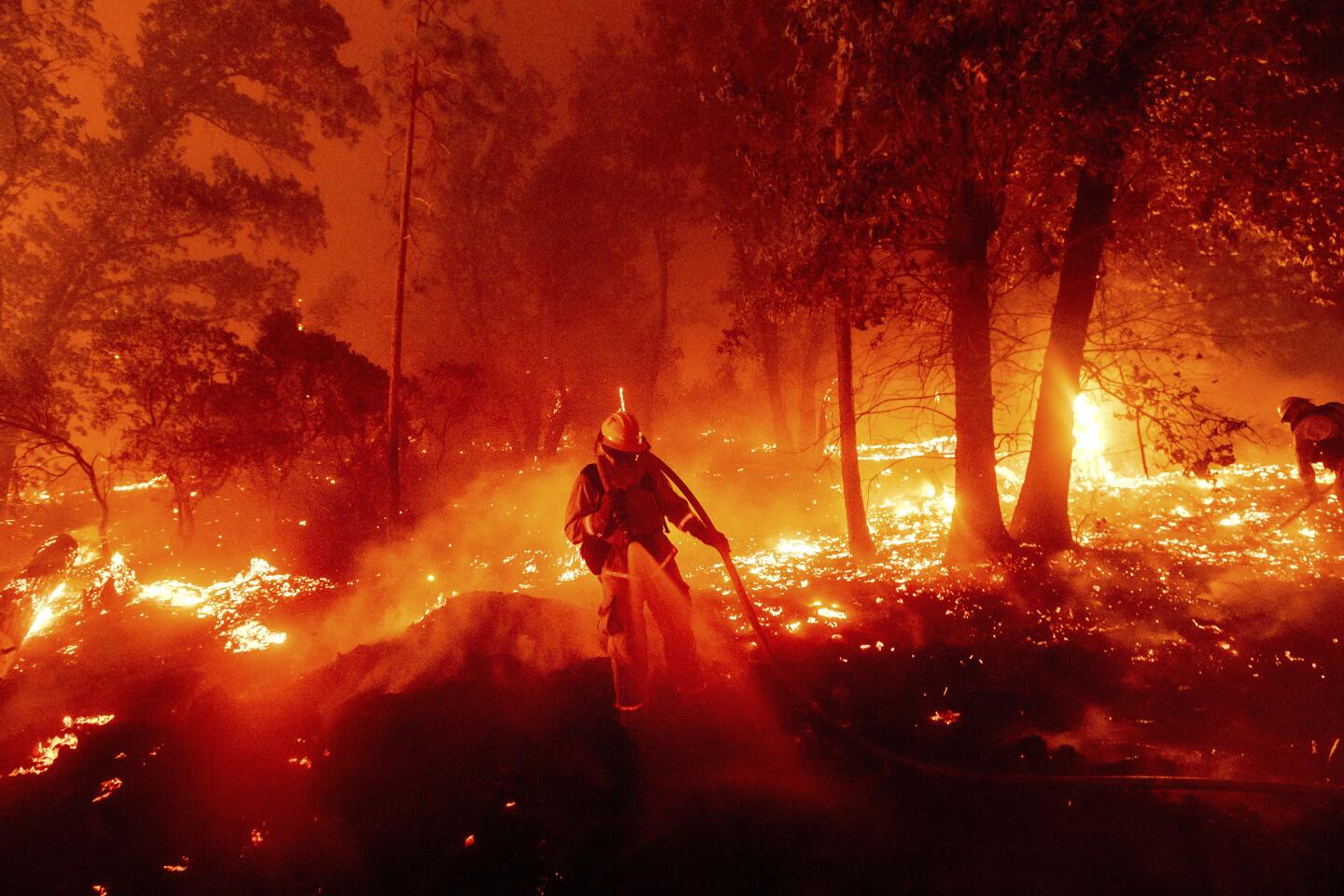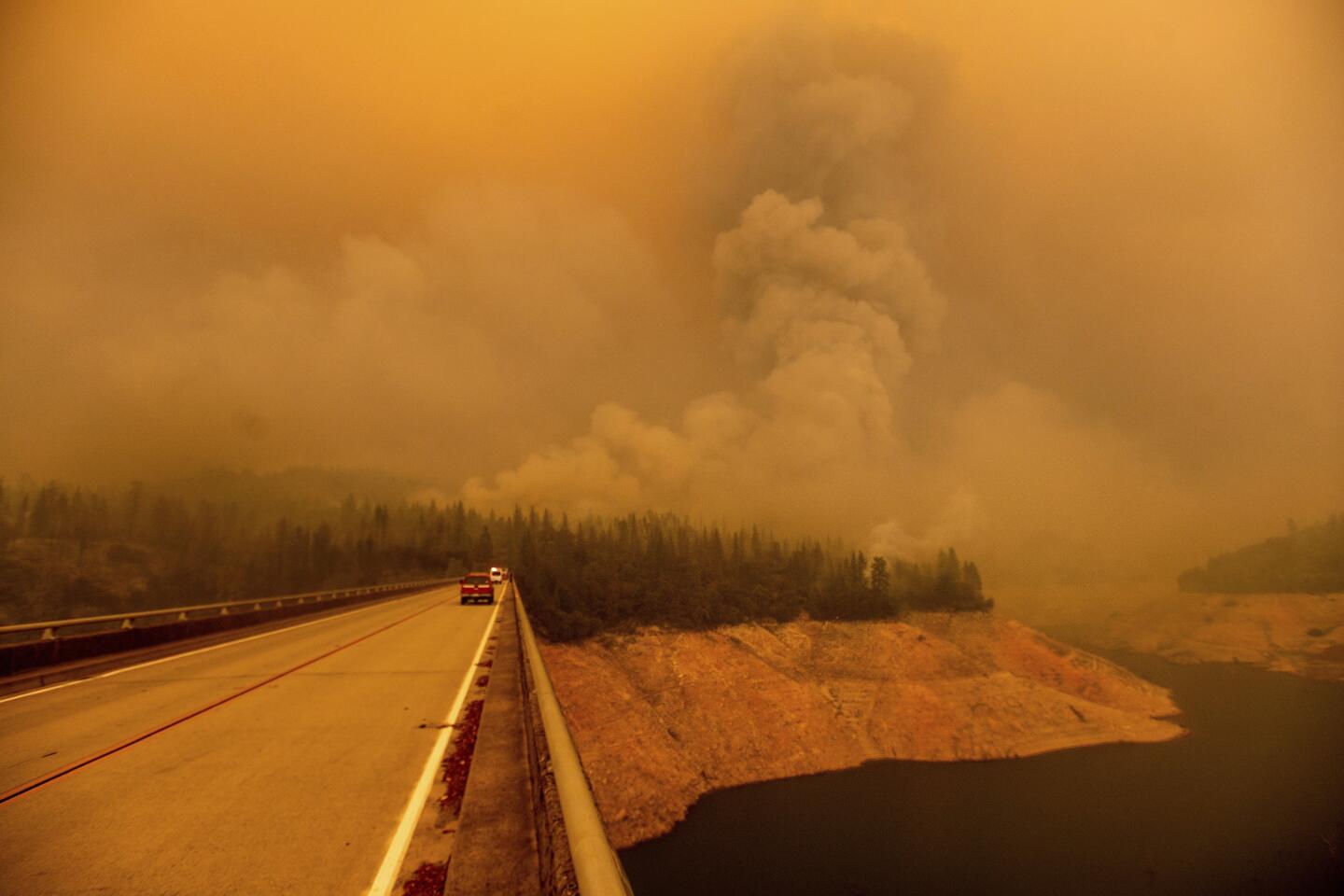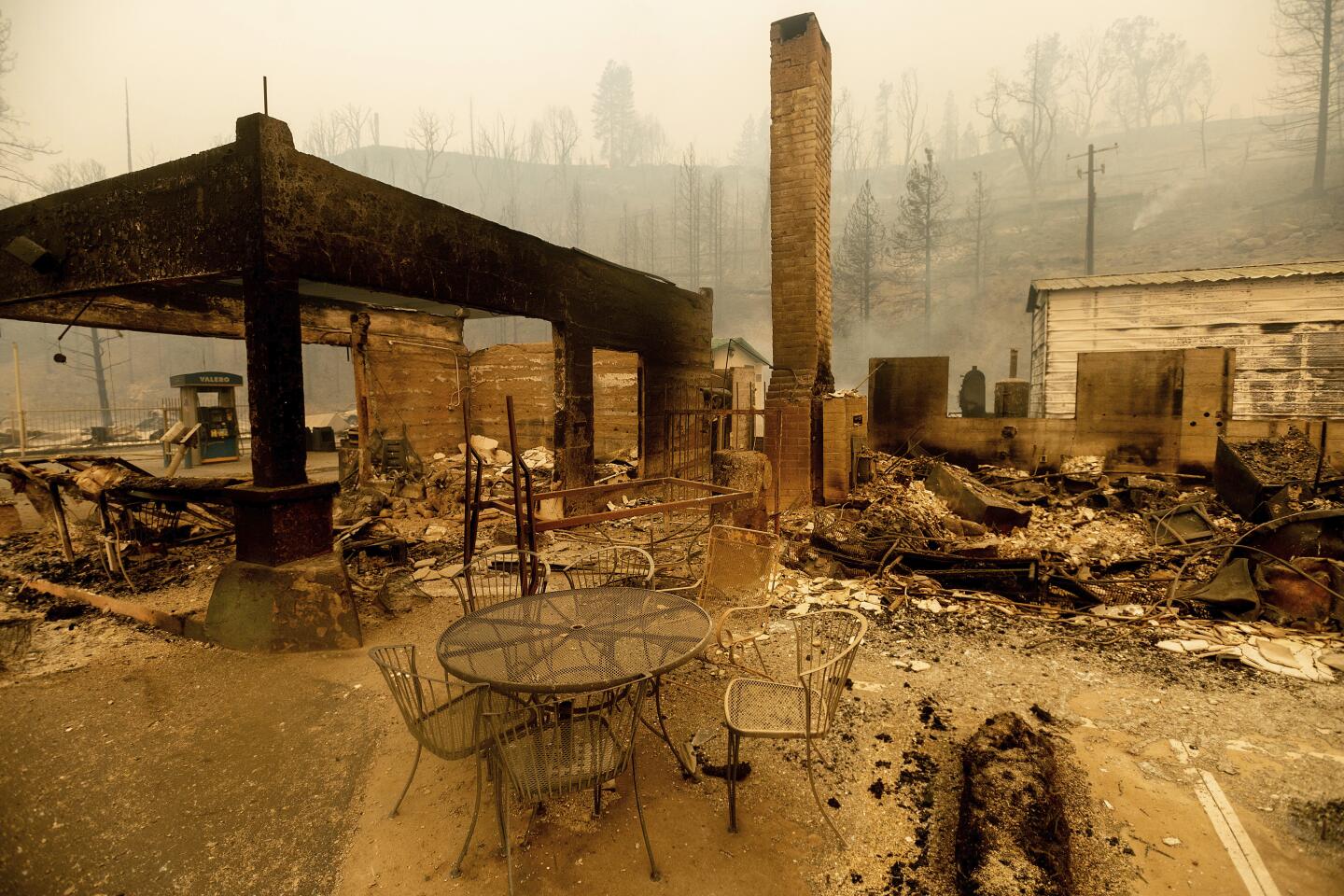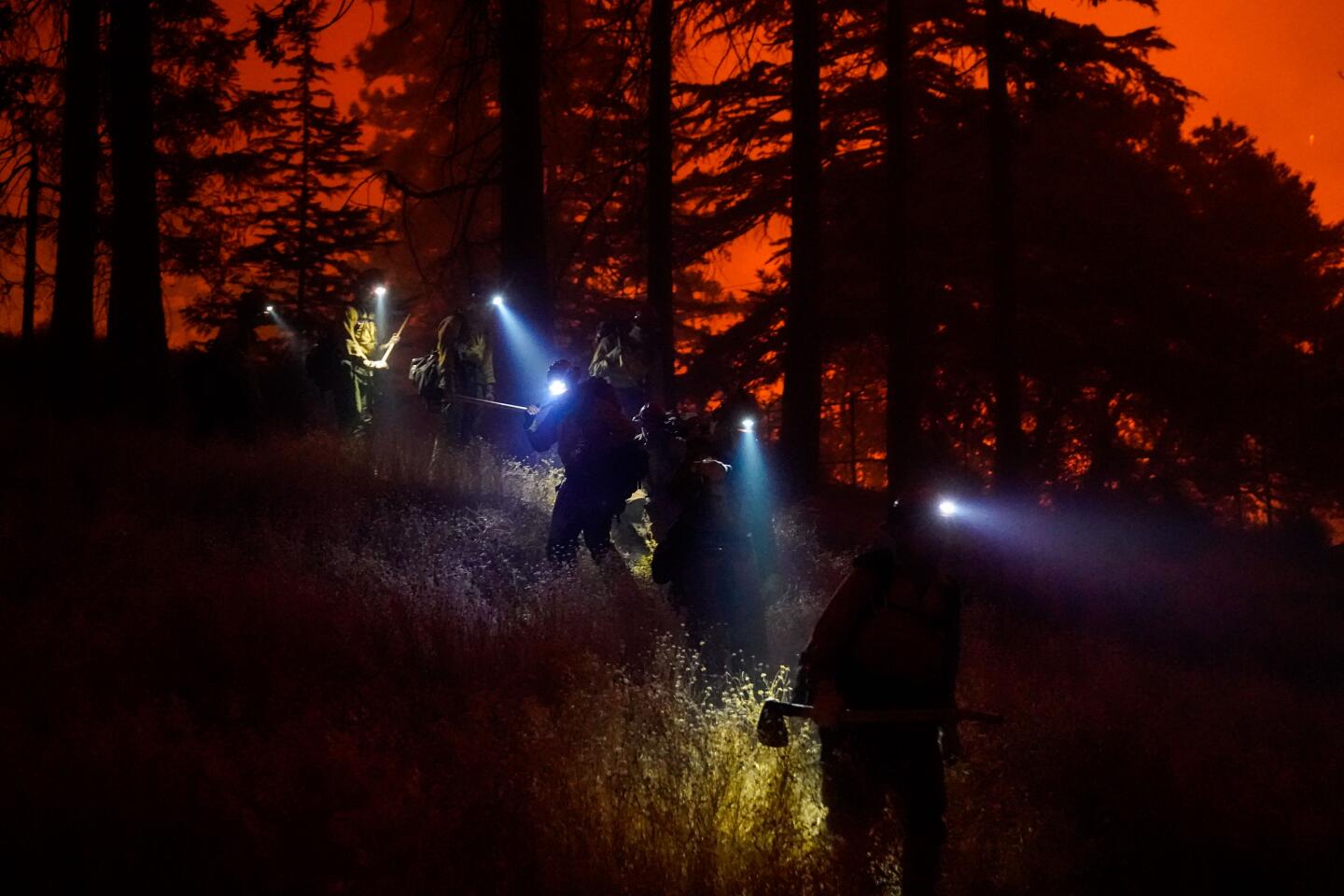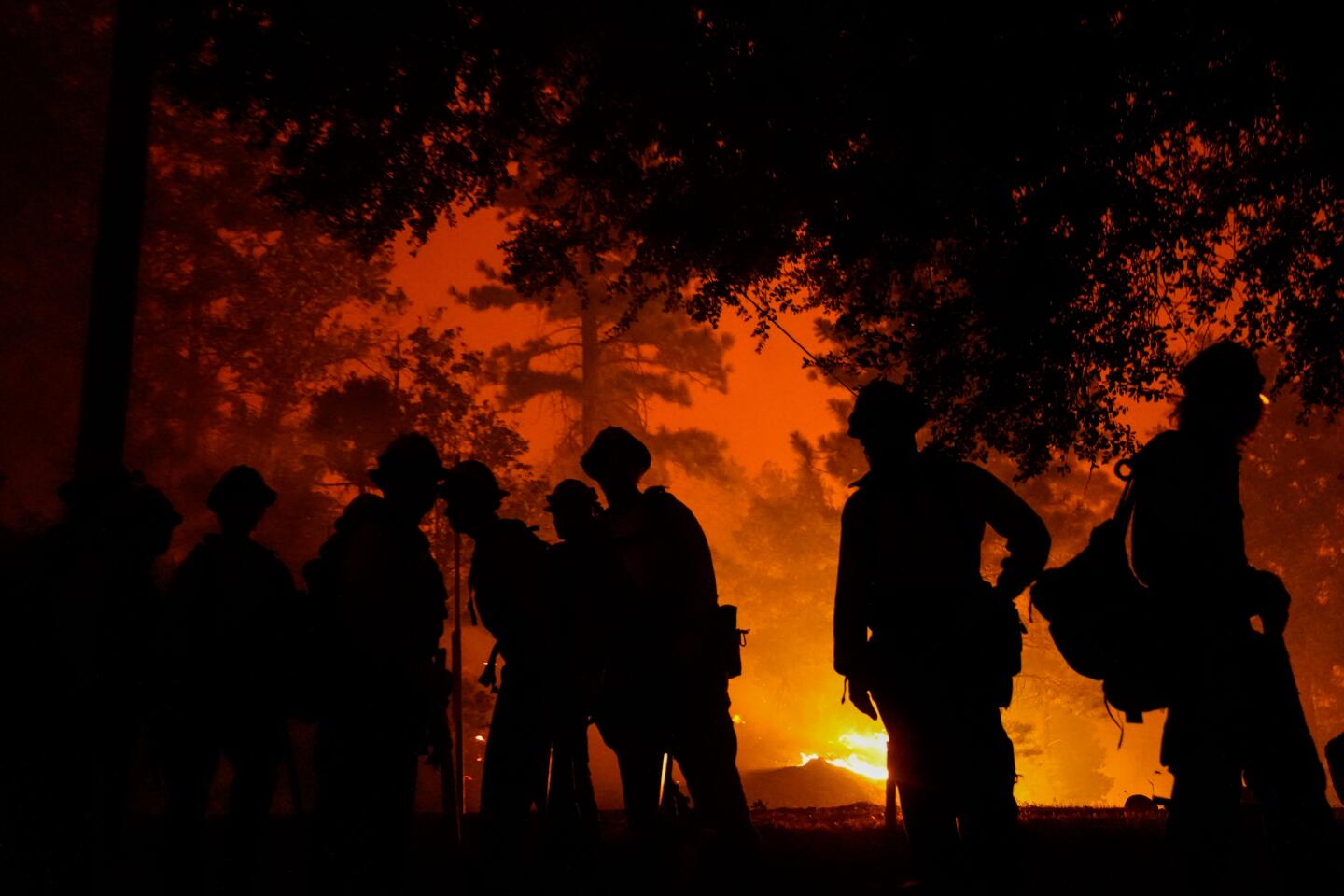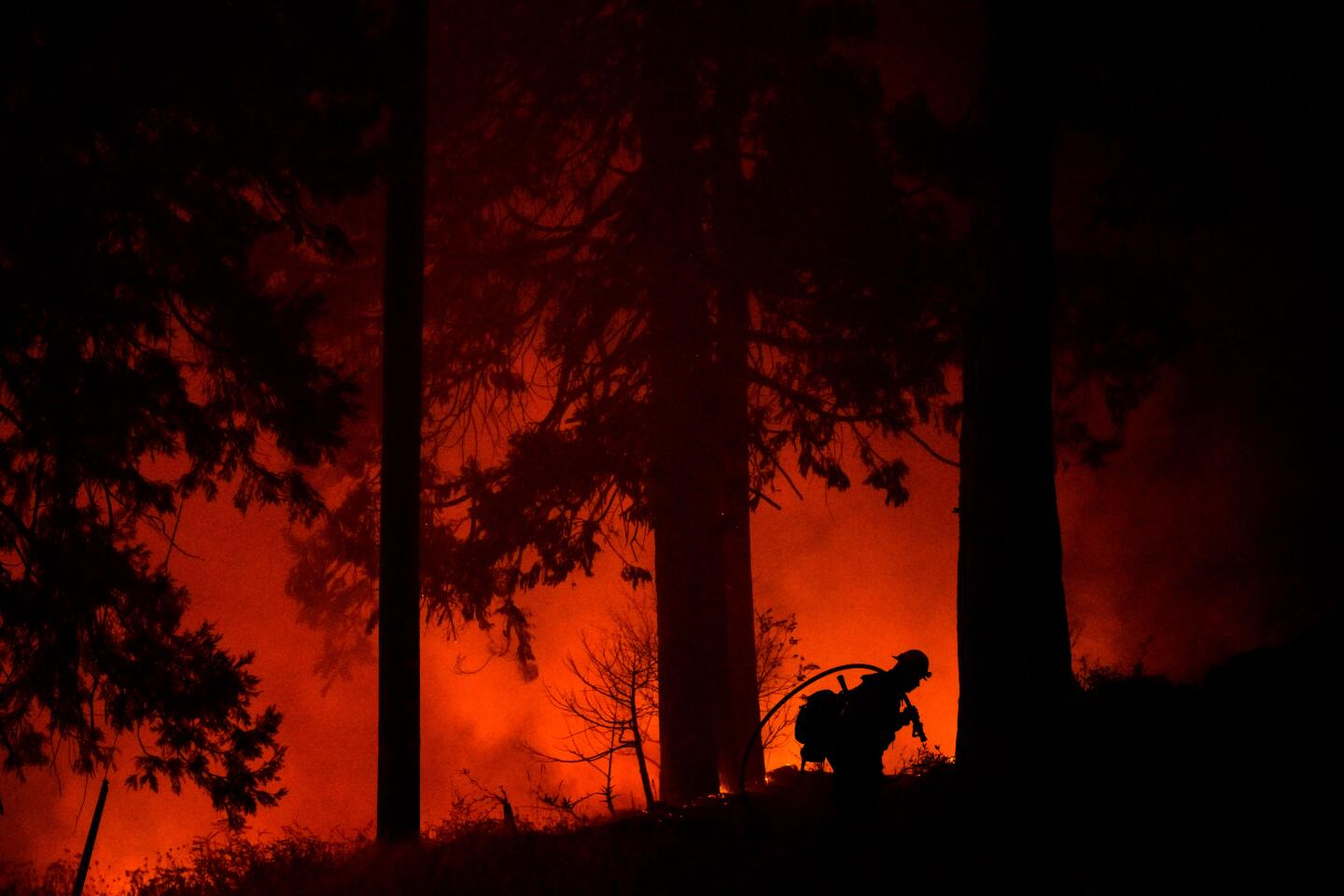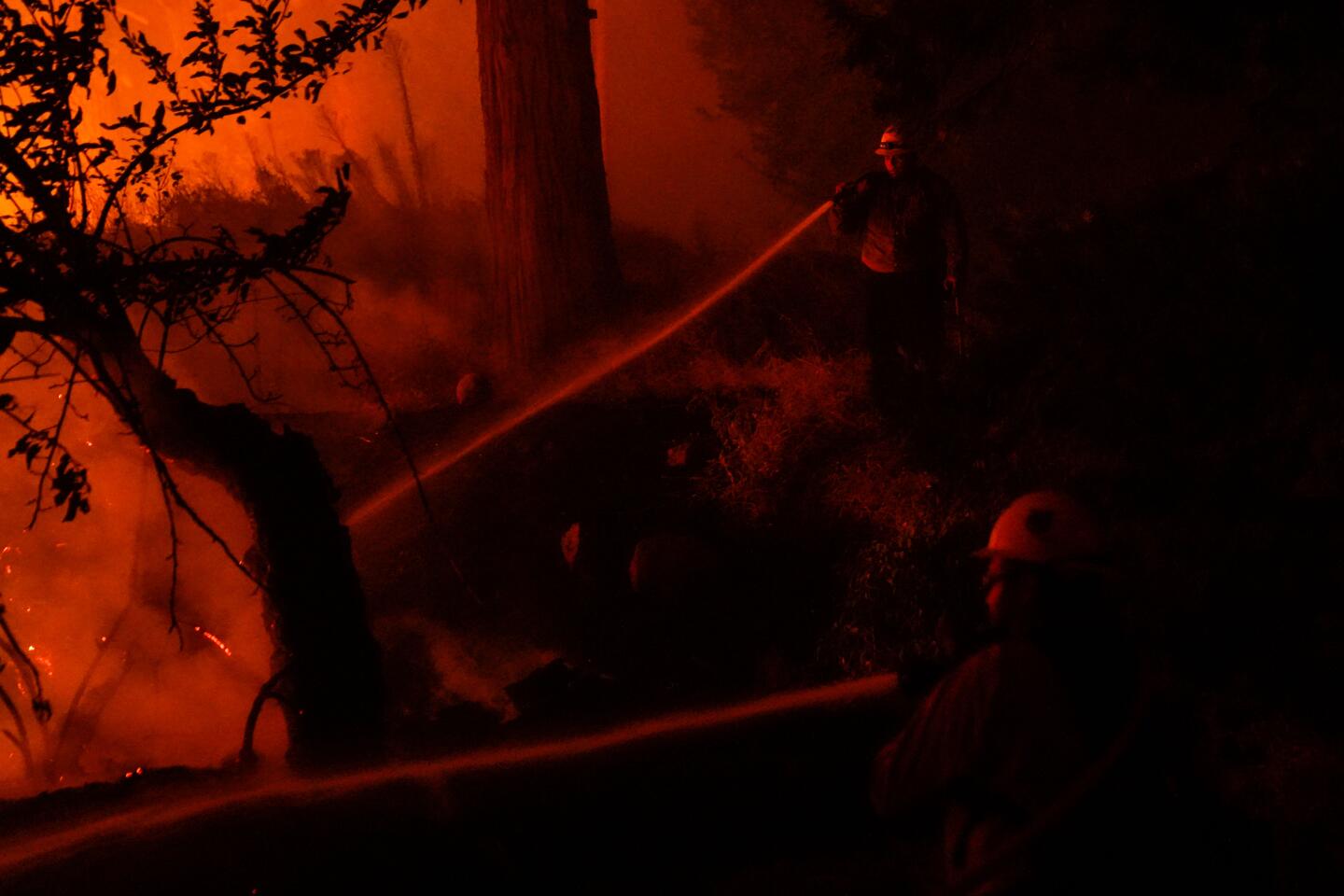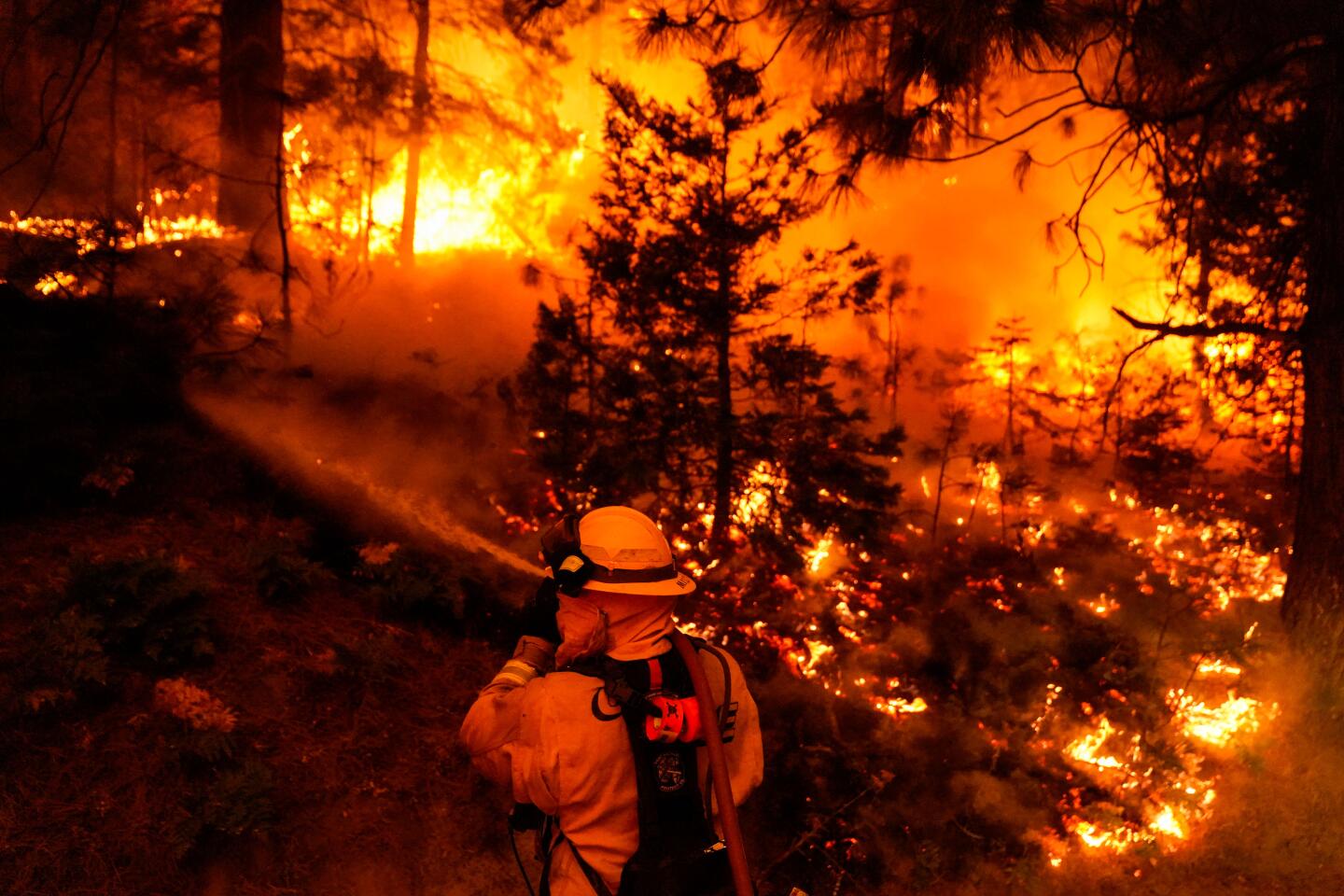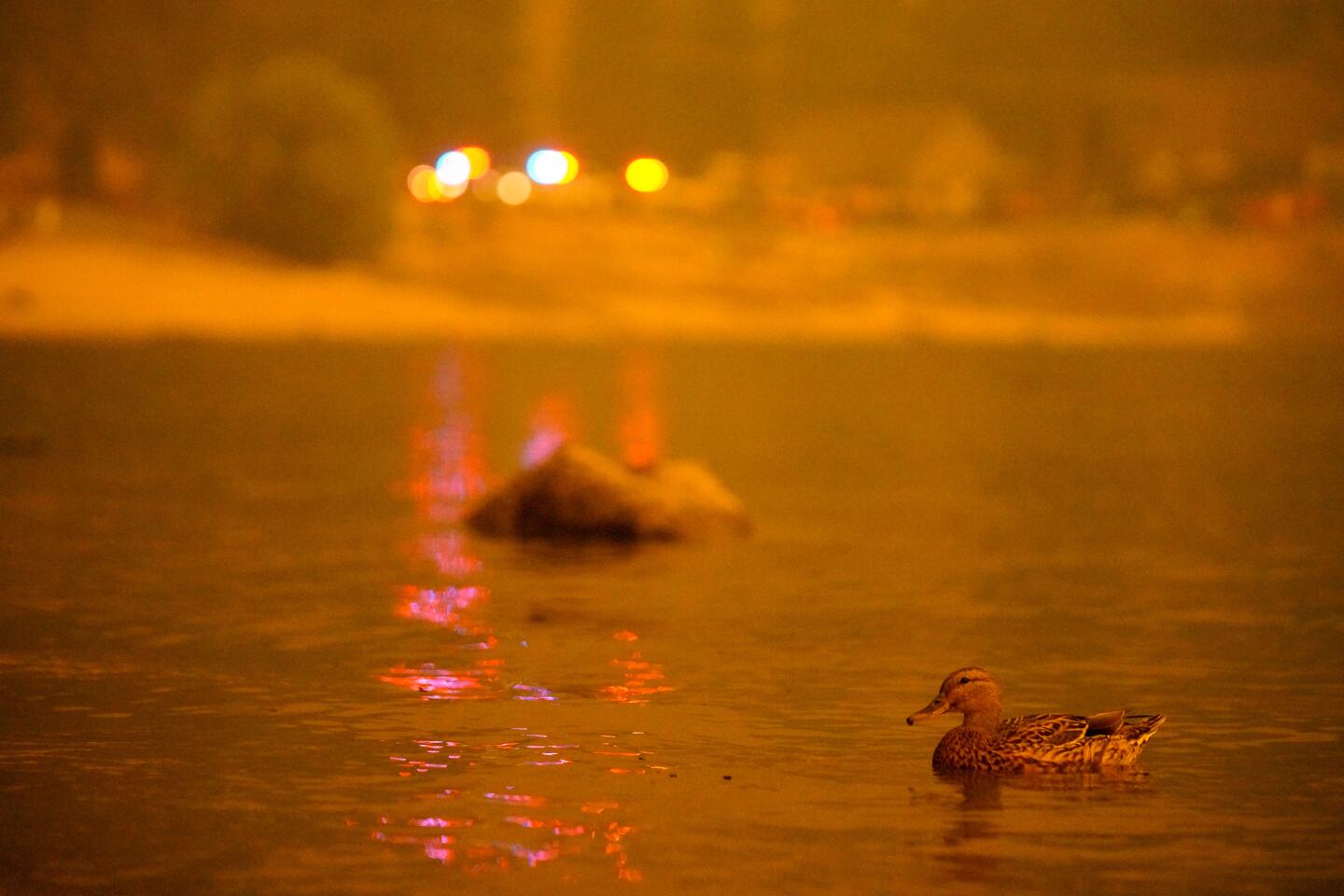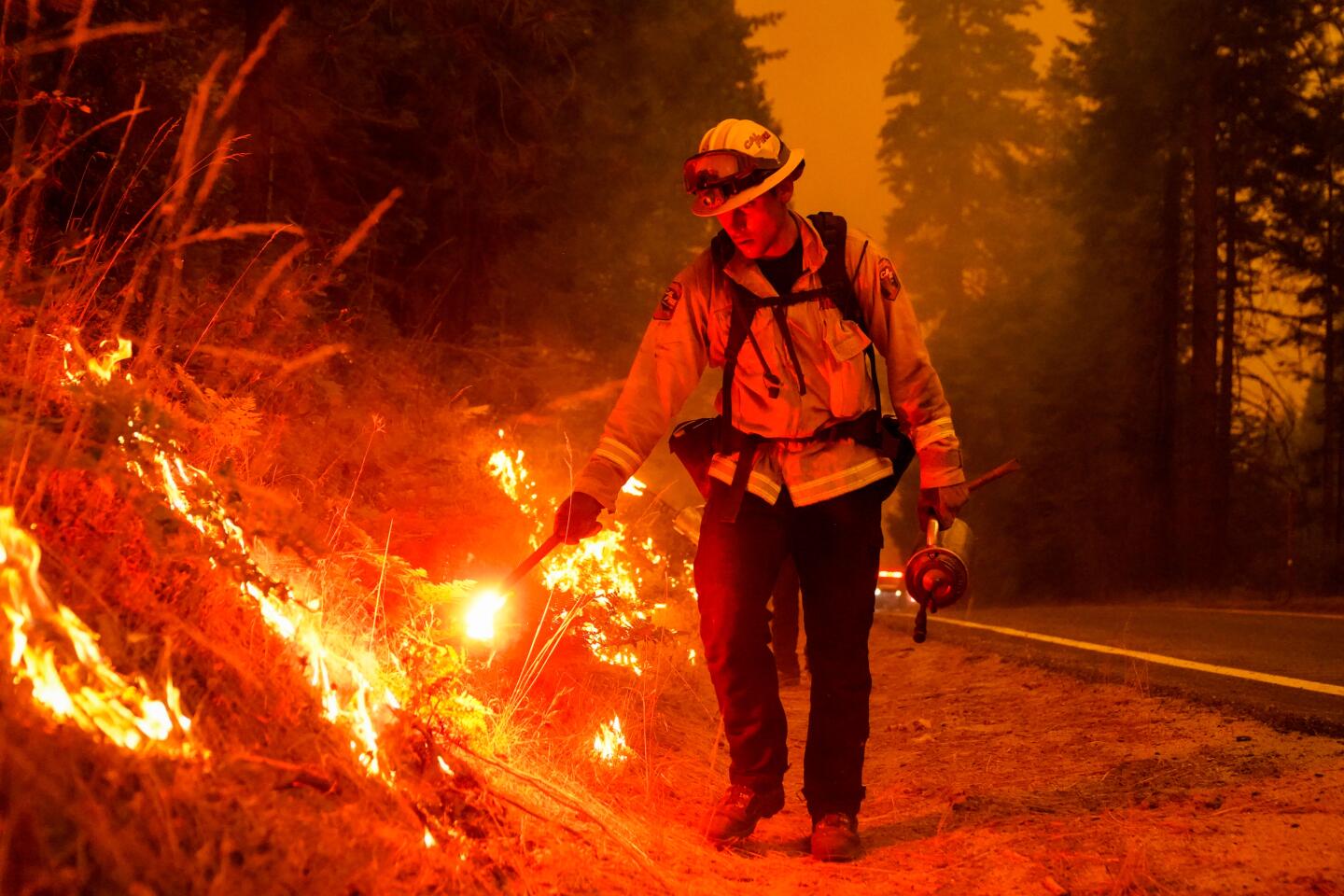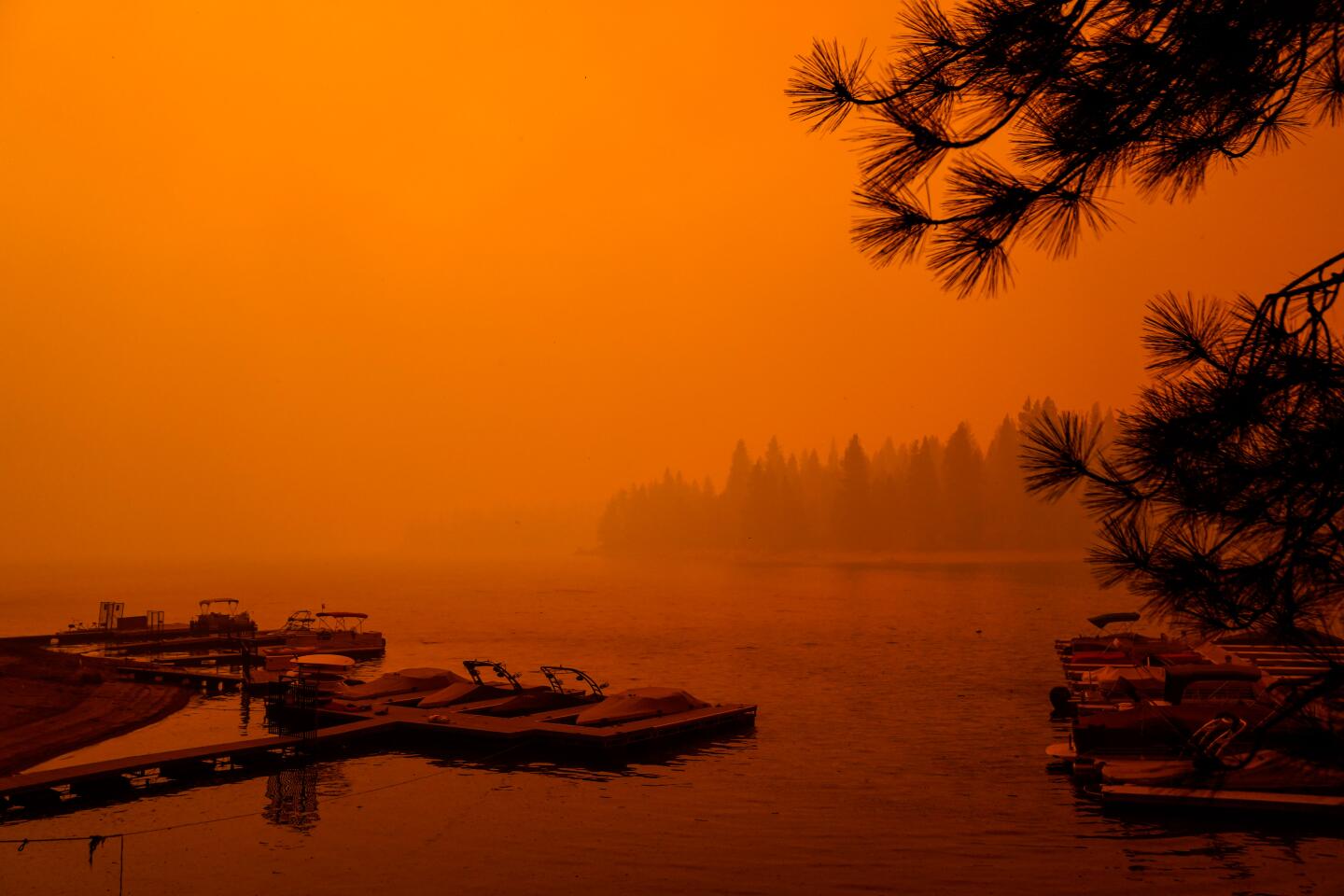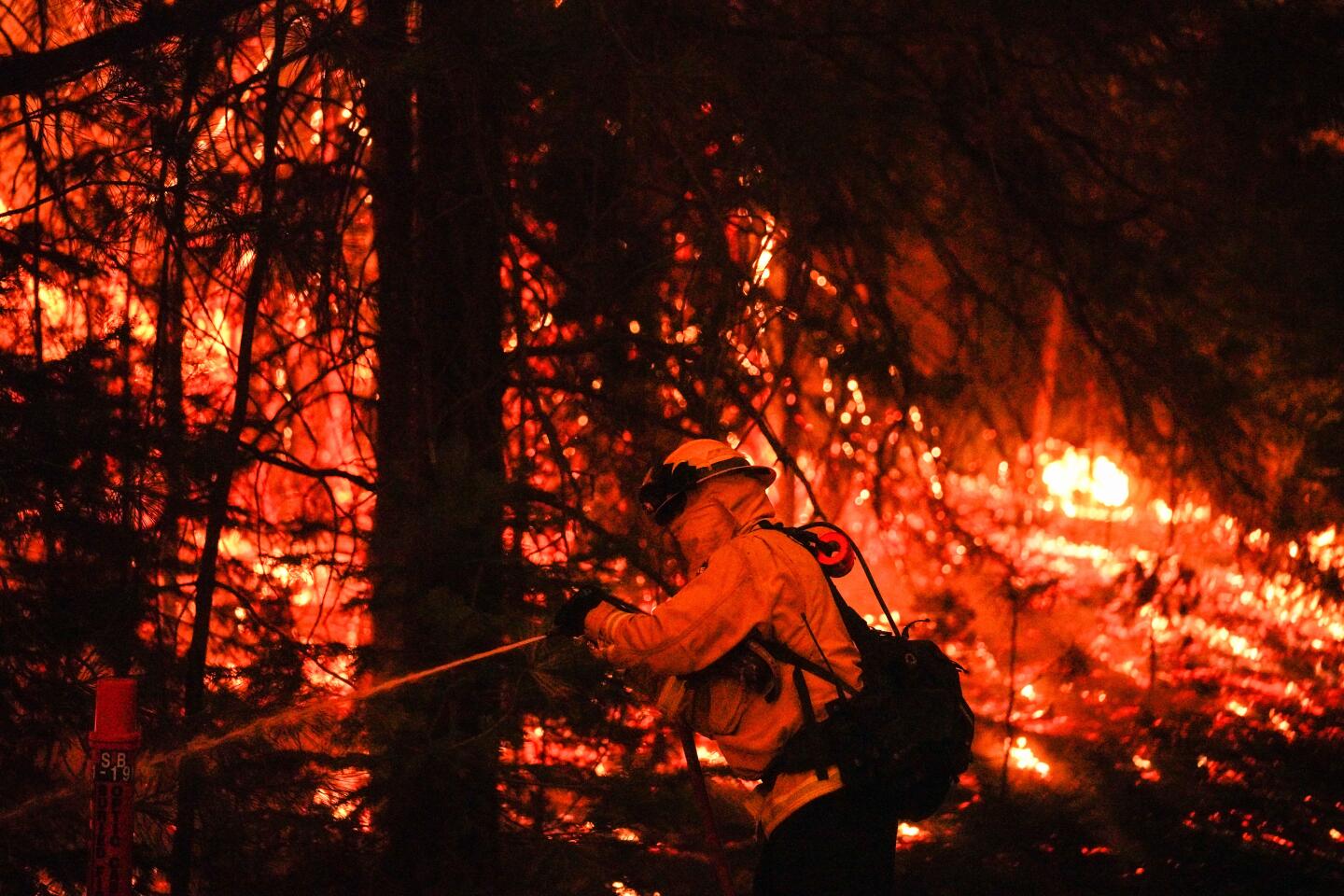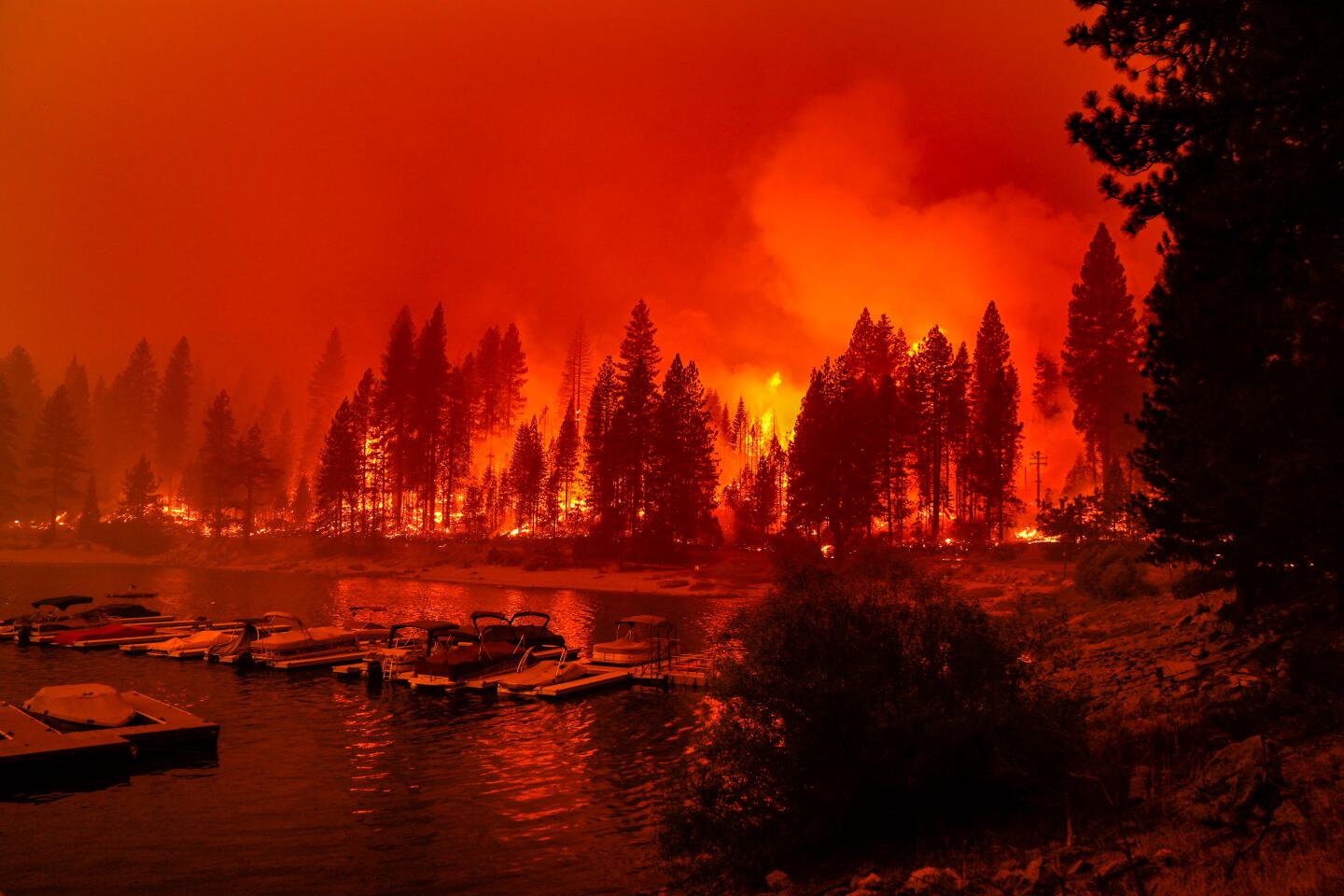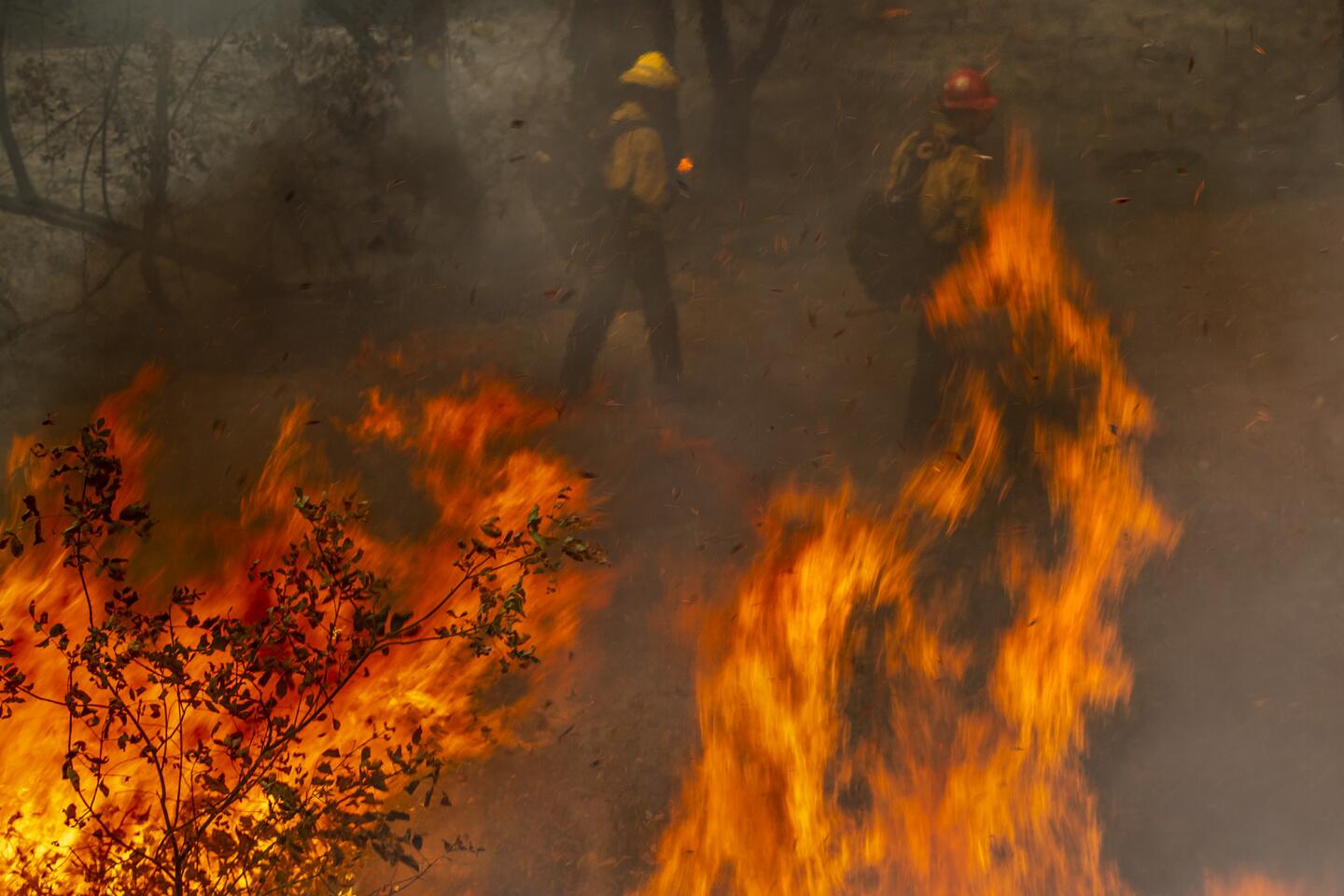Smoke blankets California as crews try to gain upper hand on sprawling blazes
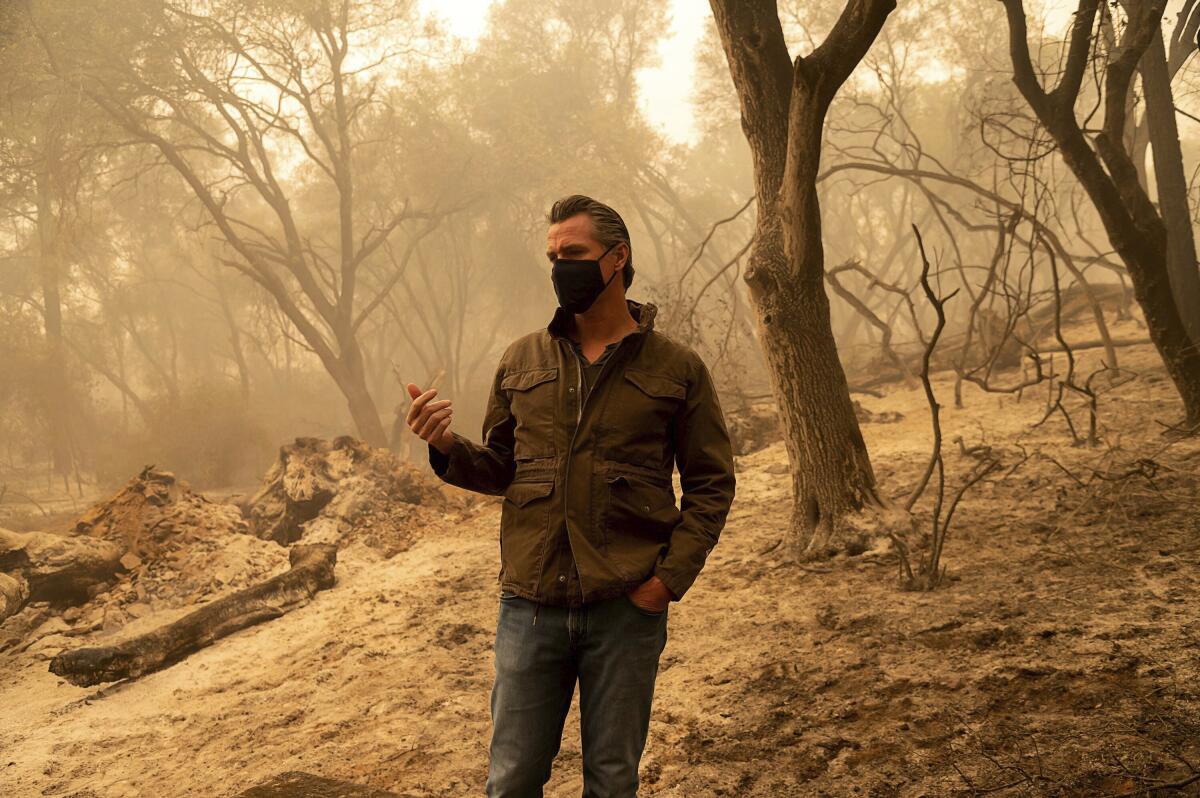
- Share via
LAKE OROVILLE, Calif. — A lull in the wind and heat Friday gave firefighters a chance to make headway against record-shattering fires in California as historic amounts of smoke continued to cause choking air pollution across the entire state and well beyond.
The scope of such widespread destruction was still being assessed. In Butte County, authorities announced they had recovered nine bodies from the footprint of the North Complex fires, the deadliest this year.
An additional 19 people have been reported missing in the area of the fire complex, which has burned more than 252,000 acres and was 21% contained as of Friday night.
So far, 19 people are known to have died in the enormous fires that began in mid-August.
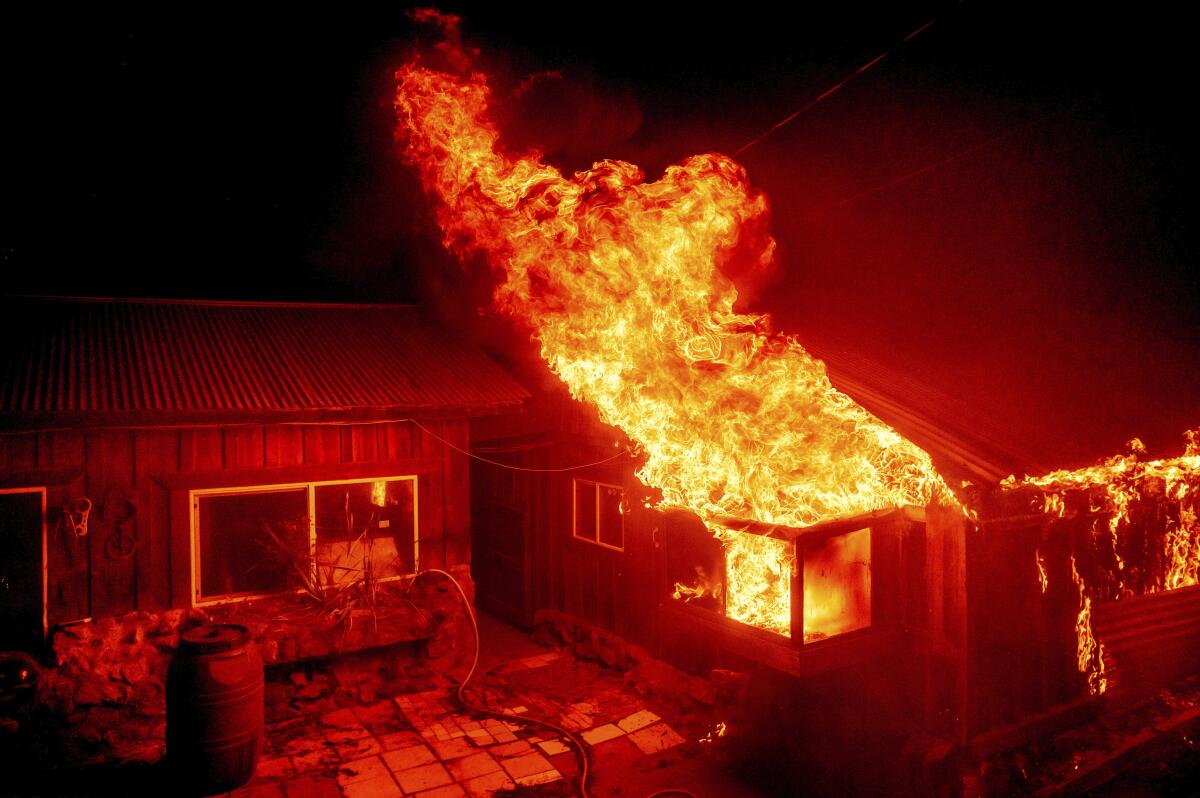
Zygy Roe-Zurz waited frantically to hear word of his mother, Suzan Violet Zurz, who was missing from the community of Berry Creek.
“I can imagine so many scenarios,” he said, speaking by phone from Oklahoma.
A medical student, he last spoke with his mother Tuesday, when she was packing to evacuate with his aunt and uncle, with whom she shared a house. But he said they subsequently heard word that made them believe the fire was being contained, the wind was dying down and it would be safe to stay.
Fire, no stranger to these hills where the Sierra Nevada meets the Cascade Range, had bypassed the family before. So they began to unpack.
A 16-year-old boy who lived with his father in Berry Creek is among 10 people killed in the blaze, now among the state’s deadliest.
A day of multiple phone calls gave way to silence. Roe-Zurz saw news that Berry Creek had been entirely torched by the fire.
On Thursday night, investigators with the Butte County Sheriff’s Office called his cousin and asked for a DNA sample, he said, to positively identify the remains of his aunt and uncle. They were found in a truck not far from their house, he said, but he does not yet know whether his mother was with them.
Knowing the fate of two beloved family members is “a relief, but it’s also disturbing that they weren’t all together,” he said. “My mom could have done something different. She was the type of person who would have done her own thing.”
Gov. Gavin Newsom surveyed the damage of the North Complex fires Friday.
They destroyed more than 2,000 structures, a number that officials say may increase as crews further survey the area.
“If you do not believe in science, I hope you believe in observed evidence,” Newsom said. “We’re in the midst of a climate crisis. We are experiencing weather conditions the likes of which we’ve never experienced in our lifetime.
“This is a climate damn emergency,” he said. “This is real, and it’s happening.”
The scale of the fires raging across the state would break records even if they were just half as big.
More than 3.1 million acres have burned. The August Complex in and around Tehama County is the largest wildfire incident in California history, at more than 491,000 acres. And it is so close to the Elkhorn fire — 255,309 acres — that the same incident command is now managing both, a revelation that sparked incorrect online reports that the two fires had merged into an even bigger mammoth.
Six of the state’s 20 largest recorded wildfires have started in the last month, according to the California Department of Forestry and Fire Protection.
With that unprecedented fire comes unprecedented smoke. An acre of woodland can carry 2,000 tons of fuel to be released into the atmosphere.
The archipelago of fire from San Diego to northern Washington has put a gray shroud over a good swath of the planet, flowing thousands of miles into the Pacific and deep into Mexico. And the lung-damaging particulates are coming down.
The worst pollution so far since the record-setting firestorms began last month has been in the San Francisco Bay Area and the Central Valley, where millions have spent weeks exposed to unhealthy air quality from wildfire smoke.
The smoke has been so thick in some areas that it’s been in the “very unhealthy” or “hazardous” range on the Air Quality Index.
In the Bay Area, which has been socked in with smoke thick enough to blot out the sun, local police departments sent alerts to residents about hazardous air quality.
San Francisco opened relief centers for homeless people Friday and urged everyone else to stay inside with windows and doors shut. Seattle is doing the same and closed its parks and beaches over the weekend because of the smoke.
Southern California had been faring better, with the smoke still aloft.
But the situation deteriorated Friday with levels of fine-particle pollution — tiny, health-damaging soot particles known as PM2.5 — violating health standards across most of the Greater L.A. region of 17 million people.
Normally, wildfires are named after nearby valleys or rivers. But this year, there are so many fires that many have converged into “complexes.” It’s confusing.
As of Friday afternoon, pollution was highest in areas of the San Gabriel Valley downwind of the Bobcat fire, where PM2.5 was in the “very unhealthy” range. Air quality was unhealthy across much of the Los Angeles area, including Central and South L.A. and southeast L.A. County.
Smoke advisories will probably remain in effect into the weekend, said Philip Fine, deputy executive officer of the South Coast Air Quality Management District.
Fine said the unpredictability of wildfires — including how long they’re going to burn, how hot they will be and how much smoke they will create — makes it difficult to forecast air quality beyond one or two days.
“Throughout Southern California, everybody is experiencing this,” Fine said. “It looks like it’s overcast, but a lot of that is smoke from the Northern California and Oregon wildfires. They have created a plume up and down the West Coast that’s over a thousand miles wide.”
The plume is “generally moving south,” he said, although that can change at any moment.
“If you’re looking at the air monitoring data in Northern California and Oregon right now, I’ve never seen anything that widespread and bad,” Fine said.
The smoke is helping the weather, keeping temperatures cooler. Cal Fire officials also said an onshore flow next week will bring more humidity.
Despite the challenges, California fire officials say they have continued to gain ground amid weather conditions that are currently improving.
Though the near-term forecast is promising, officials warned that the fire season is far from over. Roughly 14,800 firefighters are still battling 28 major wildfires burning statewide, according to Cal Fire.
“Don’t let these cooler temperatures fool you. Do not let your guard down,” Cal Fire spokesman Daniel Berlant said Friday. “Historically, it is September and October when we experience our largest and our most damaging wildfires.”
Times staff writers Hayley Smith, Maura Dolan and Colleen Shalby contributed to this report.
More to Read
Sign up for Essential California
The most important California stories and recommendations in your inbox every morning.
You may occasionally receive promotional content from the Los Angeles Times.
